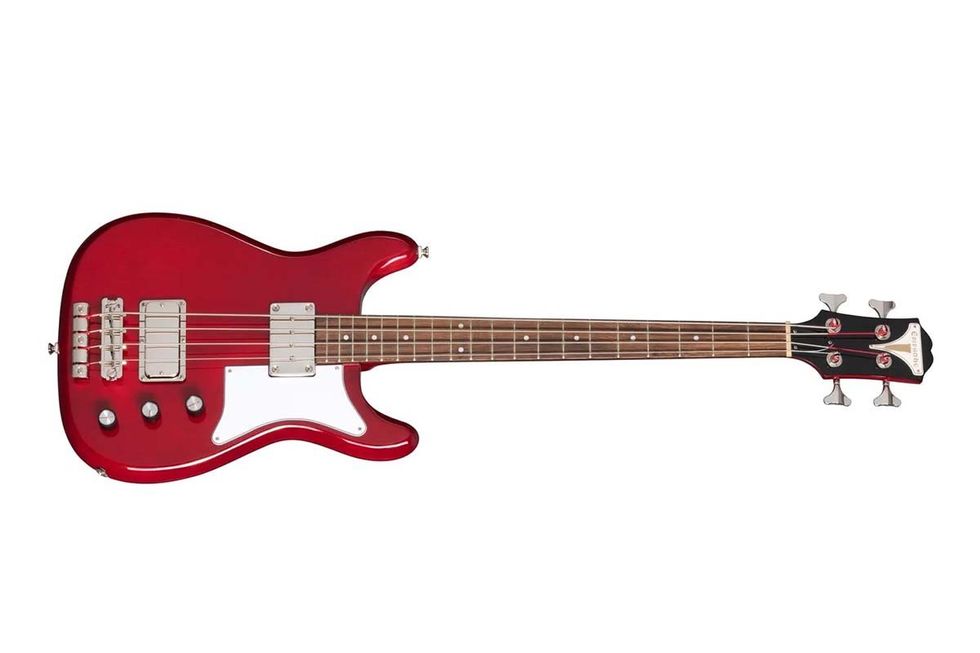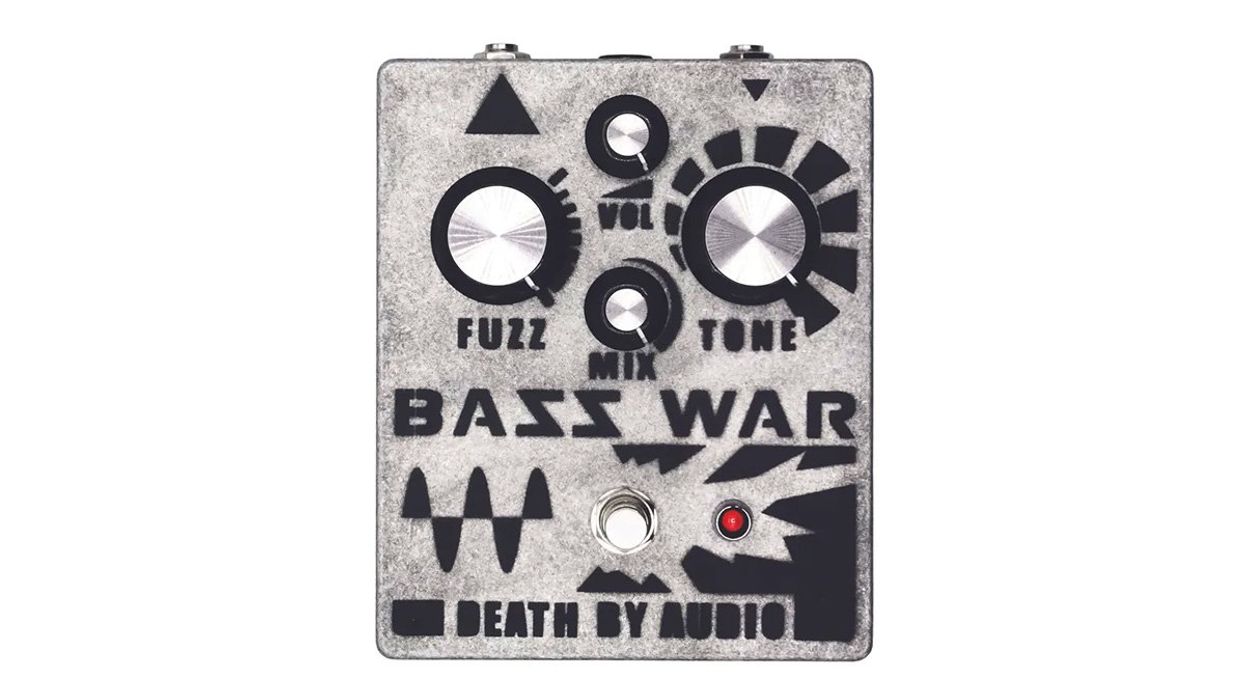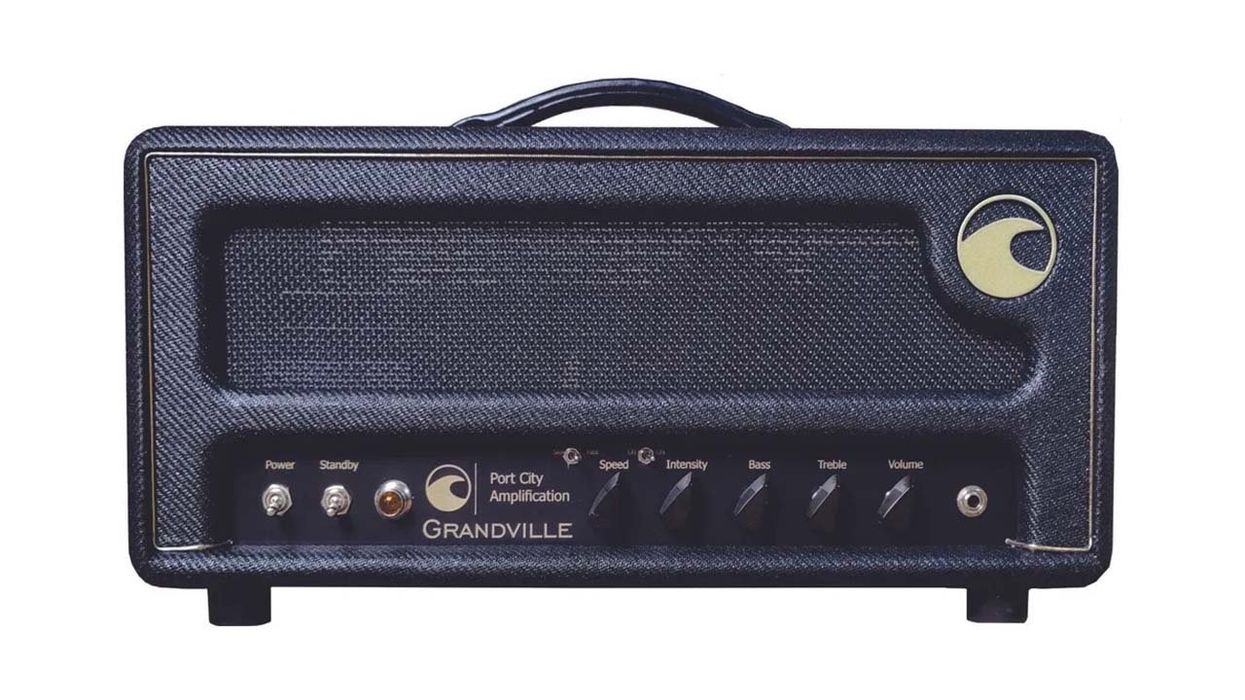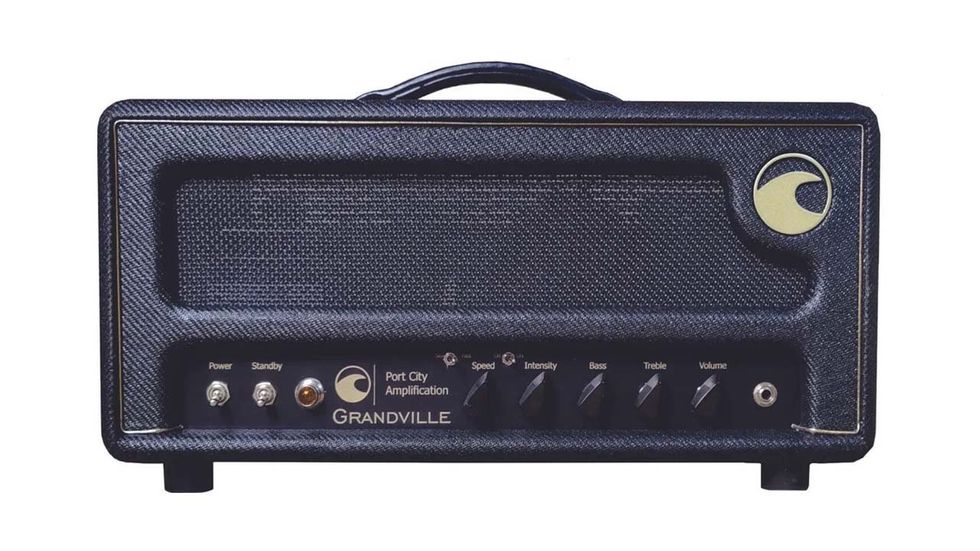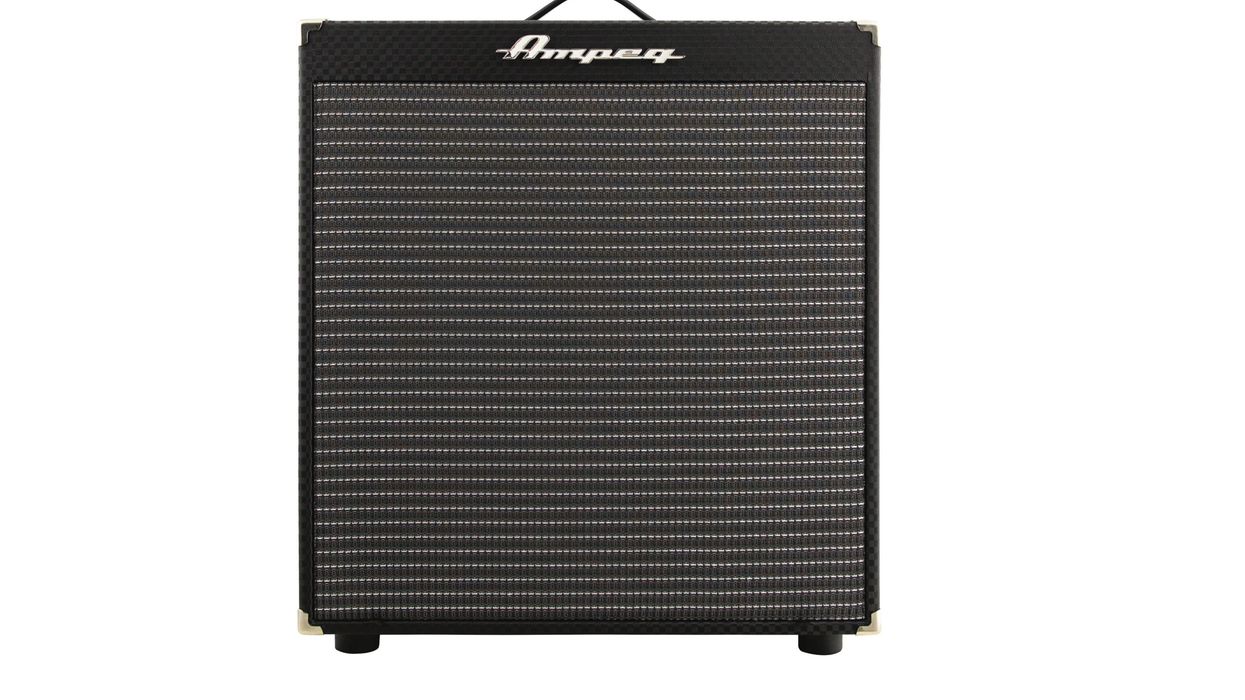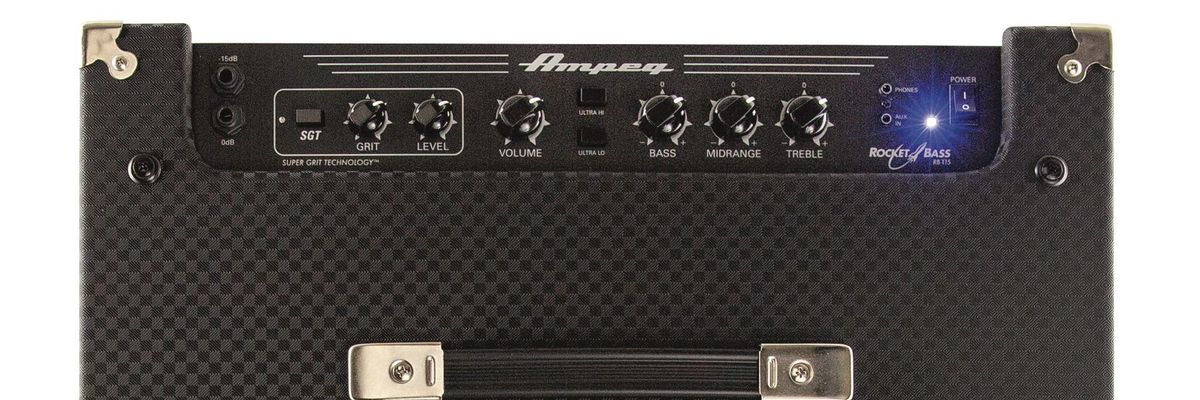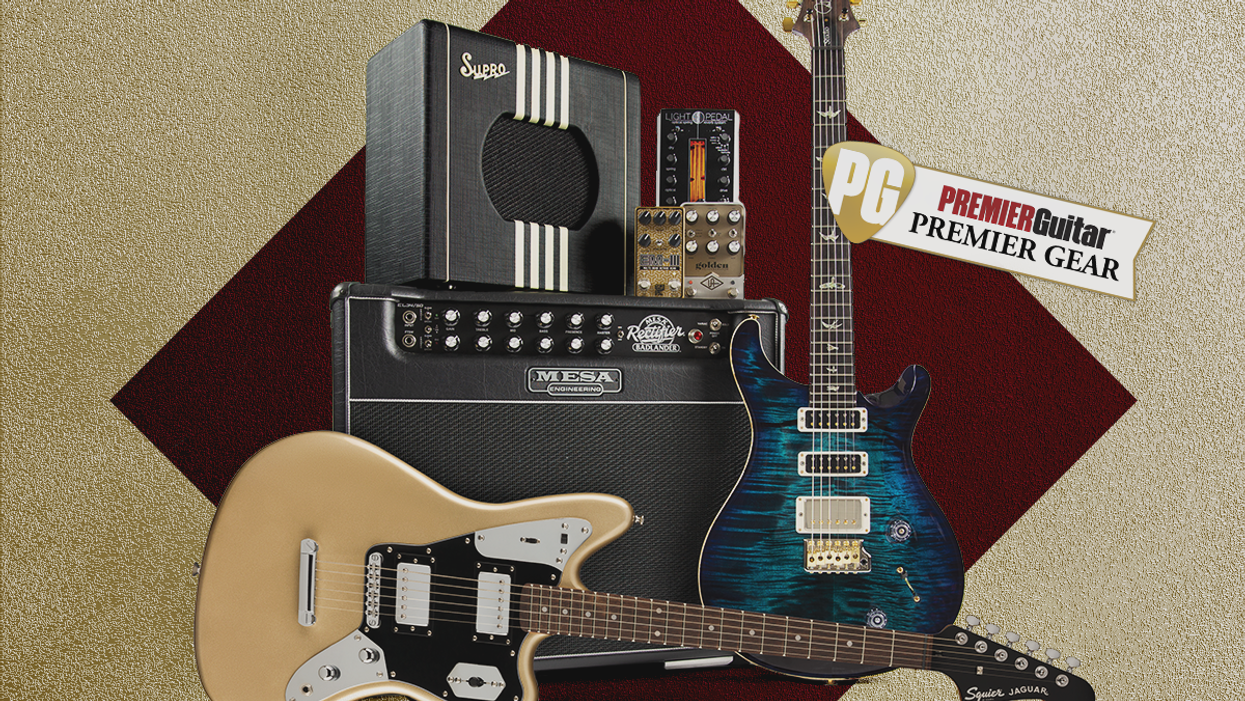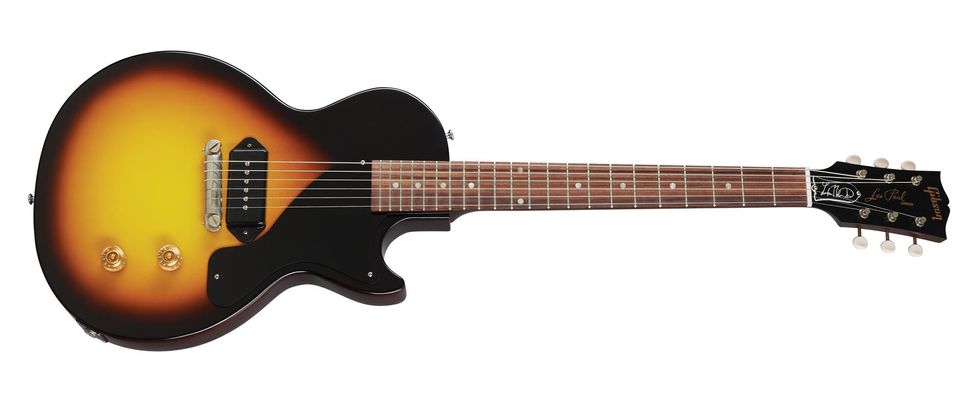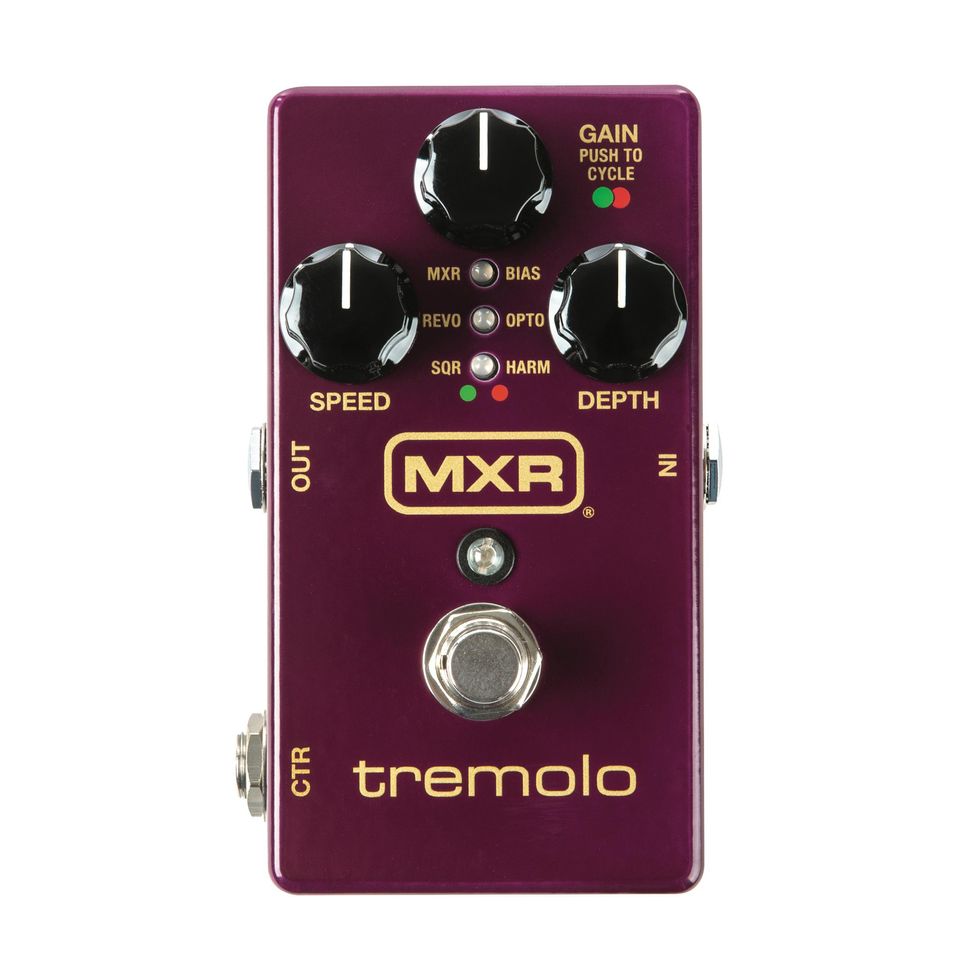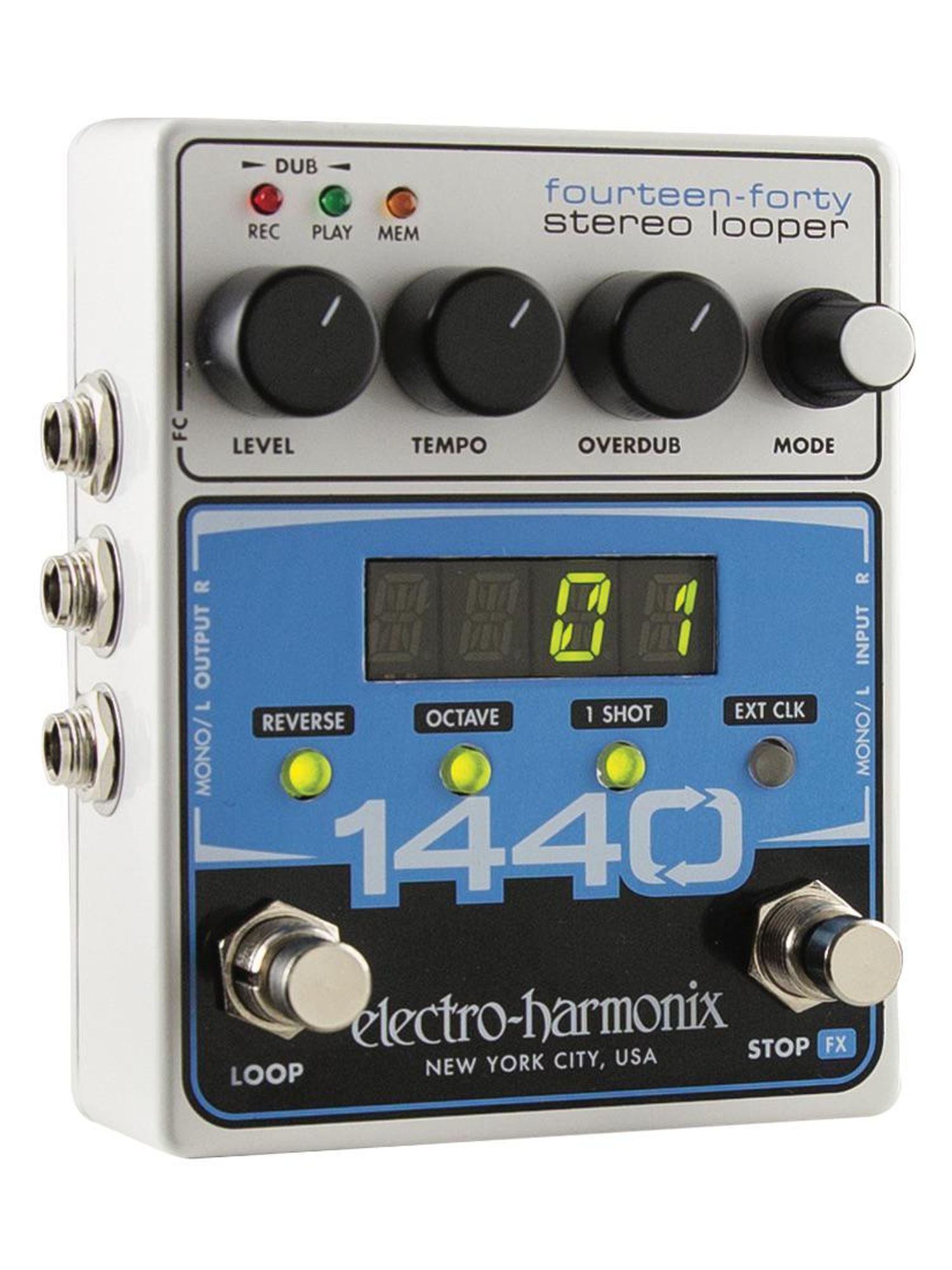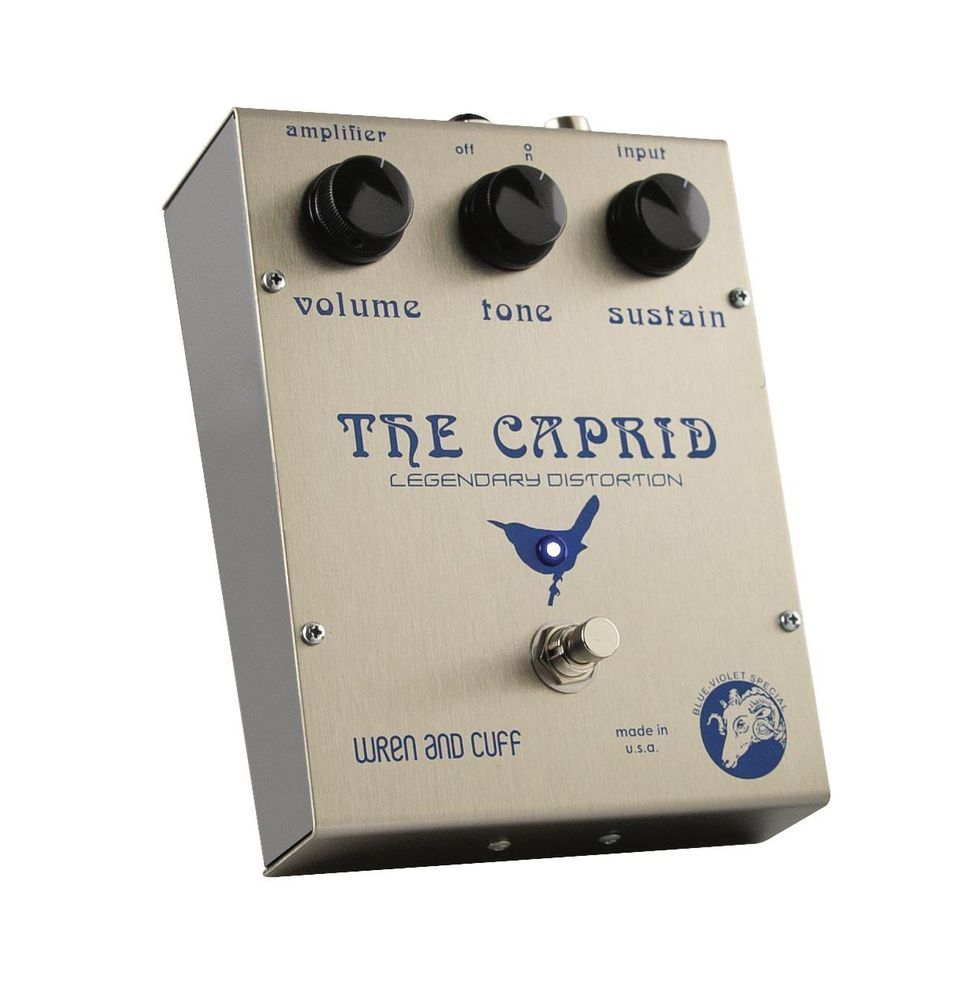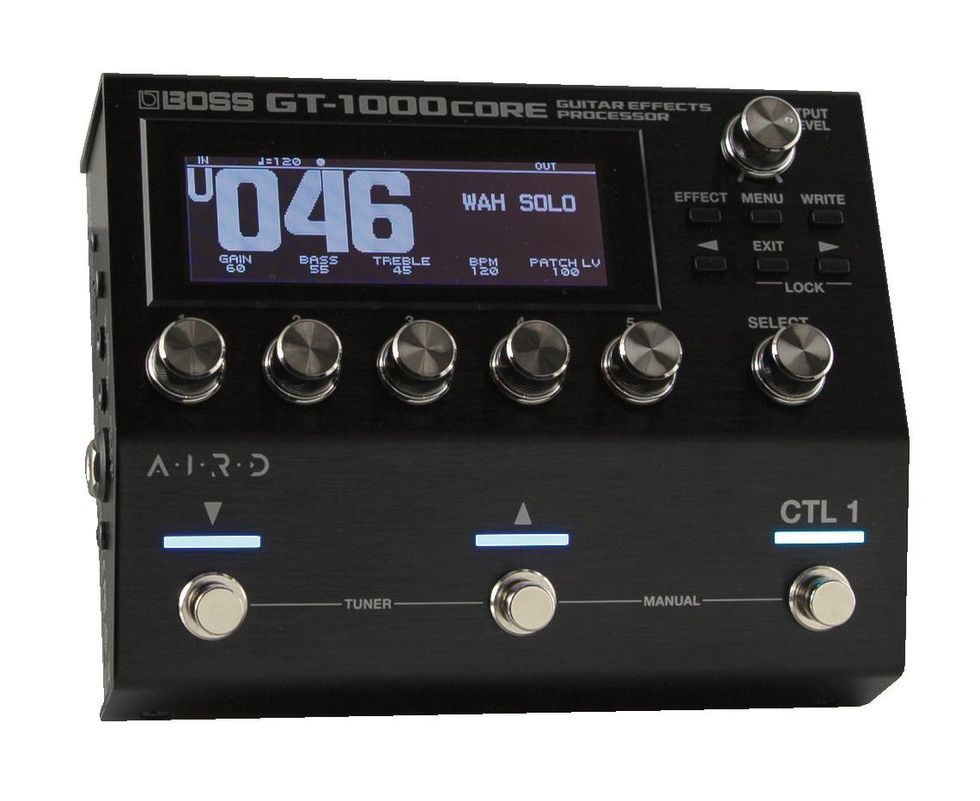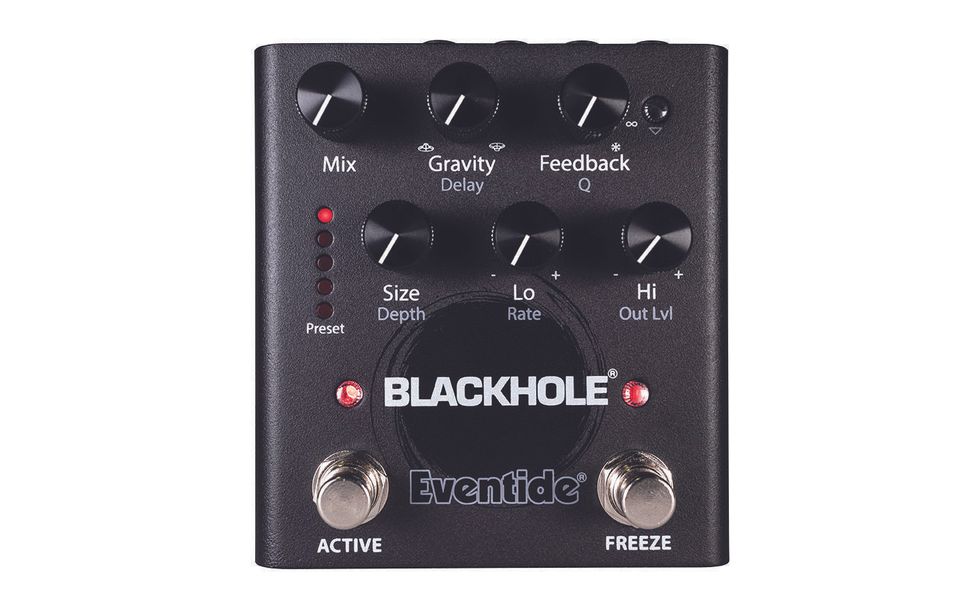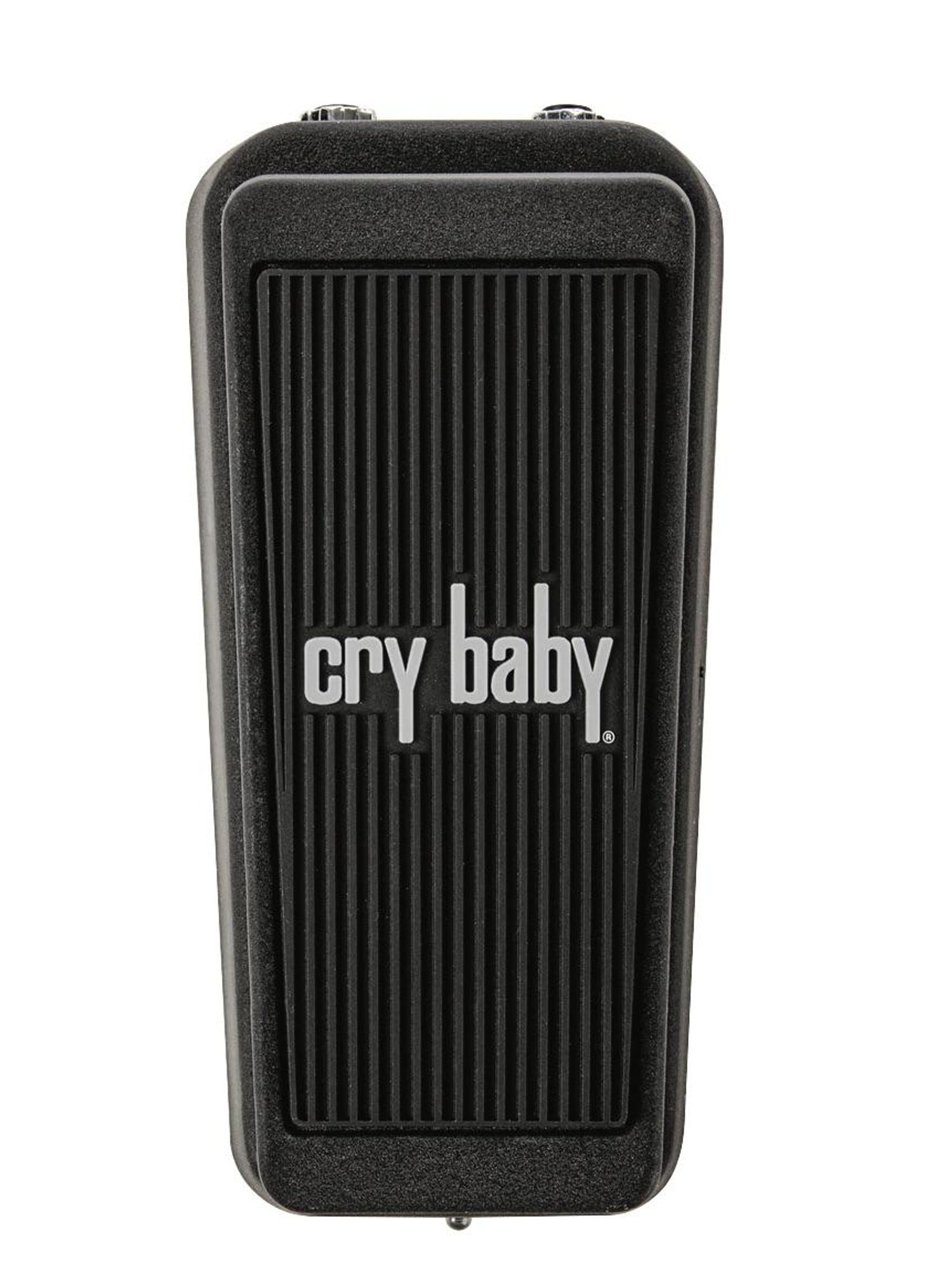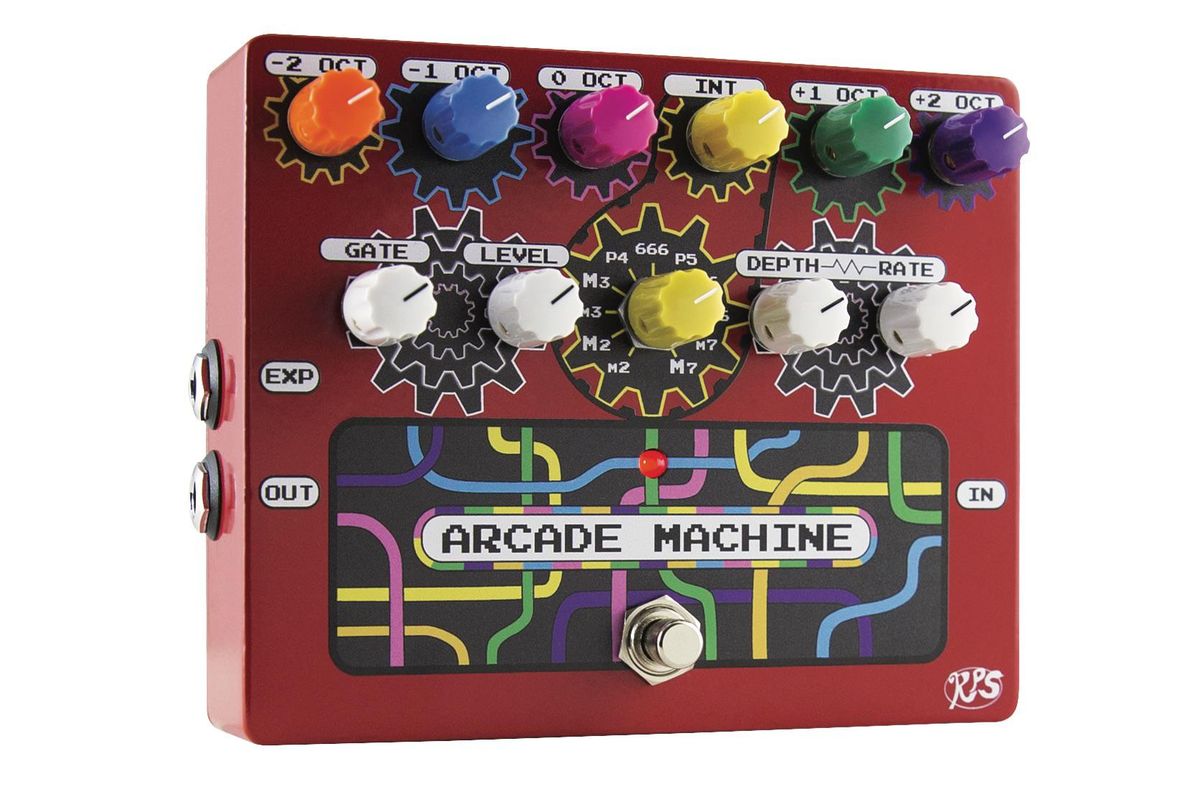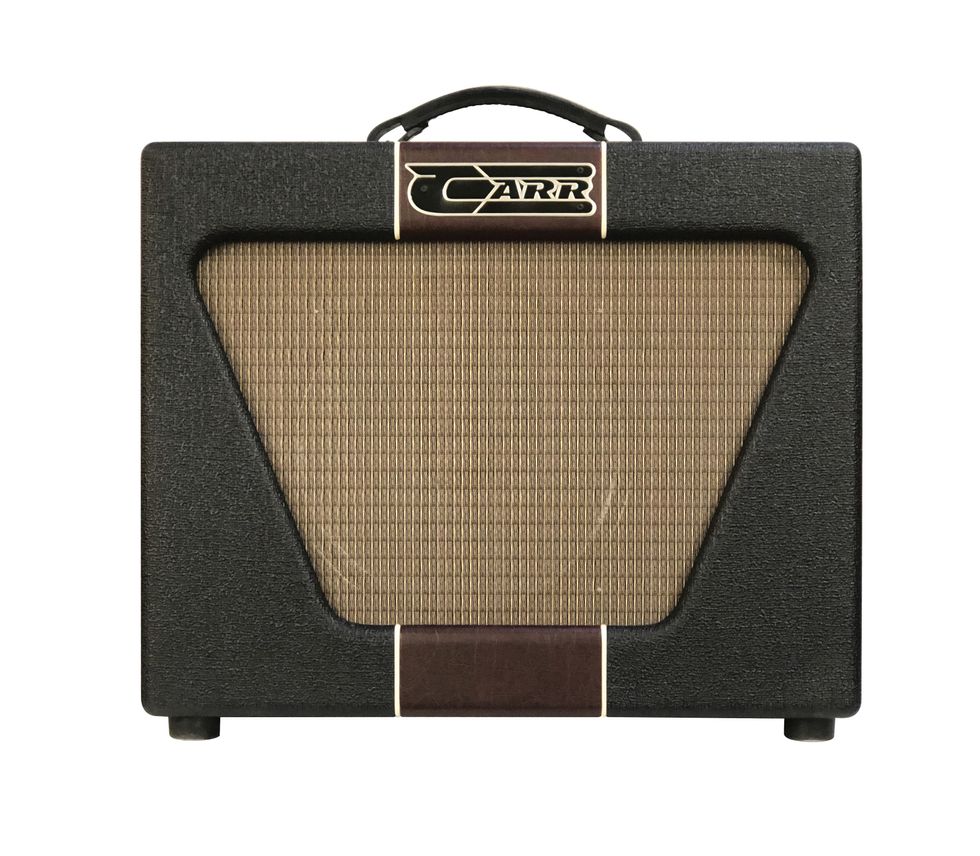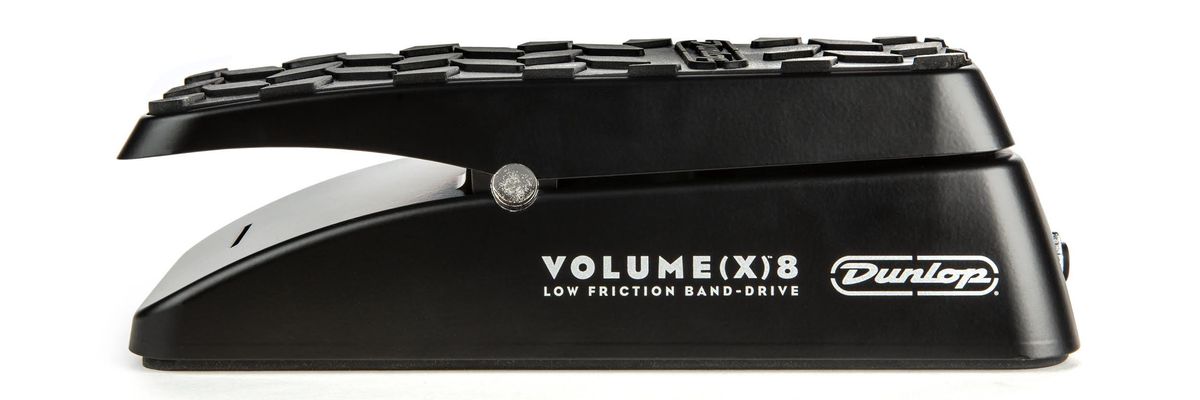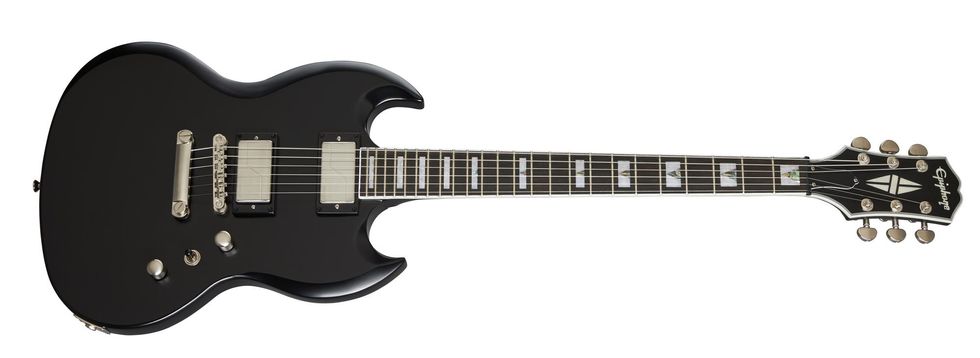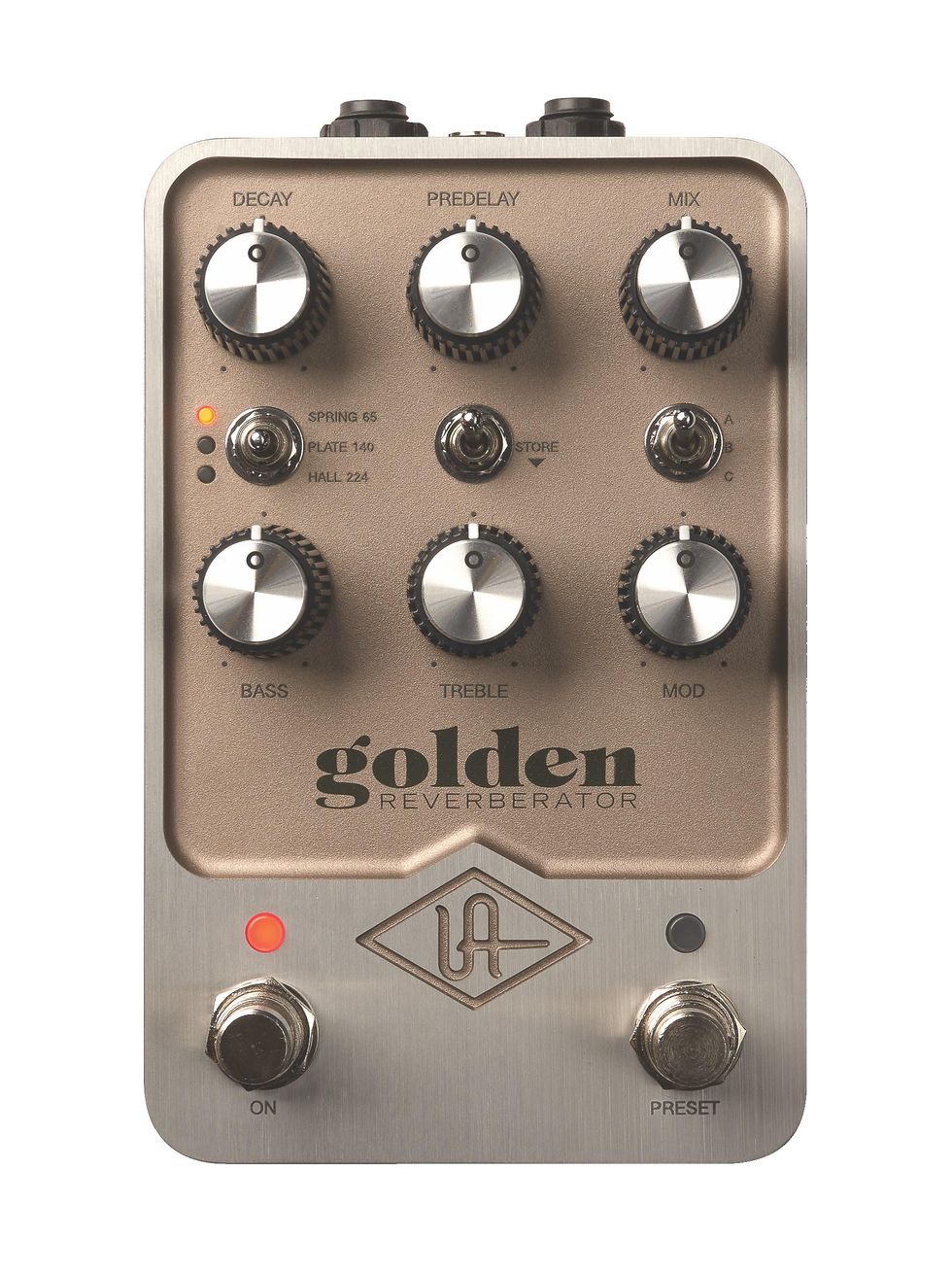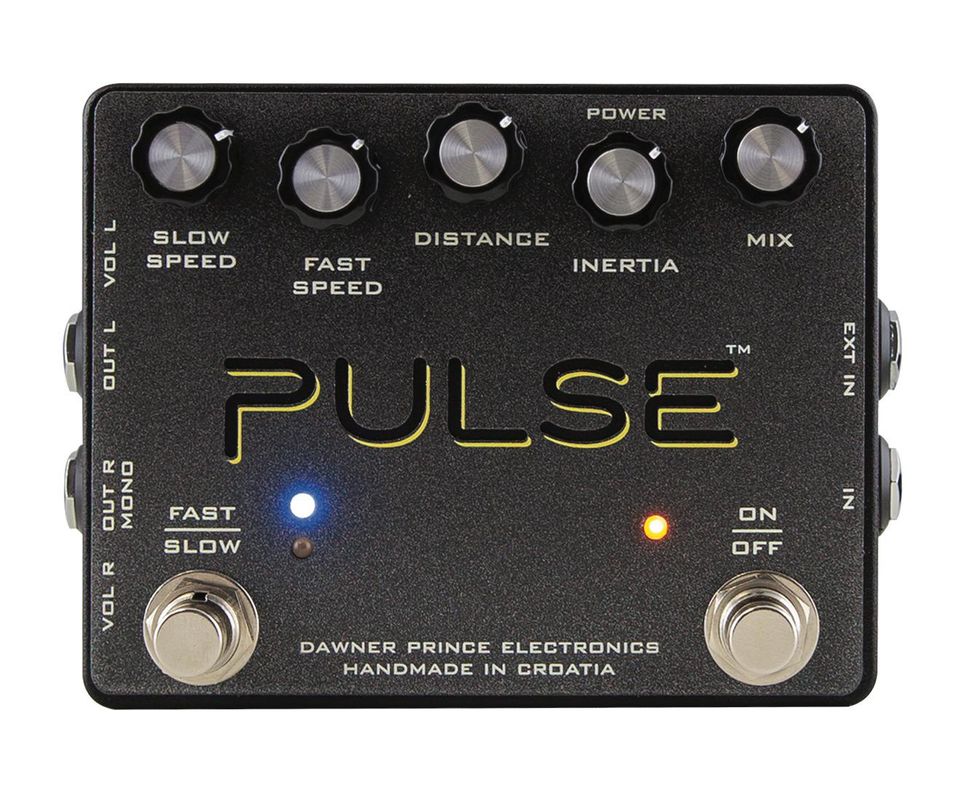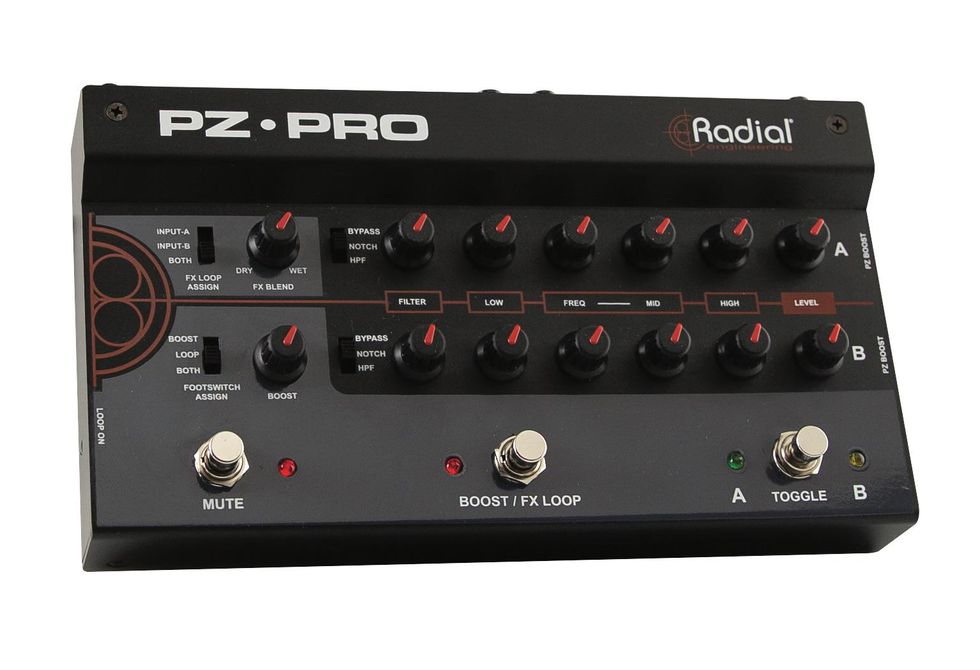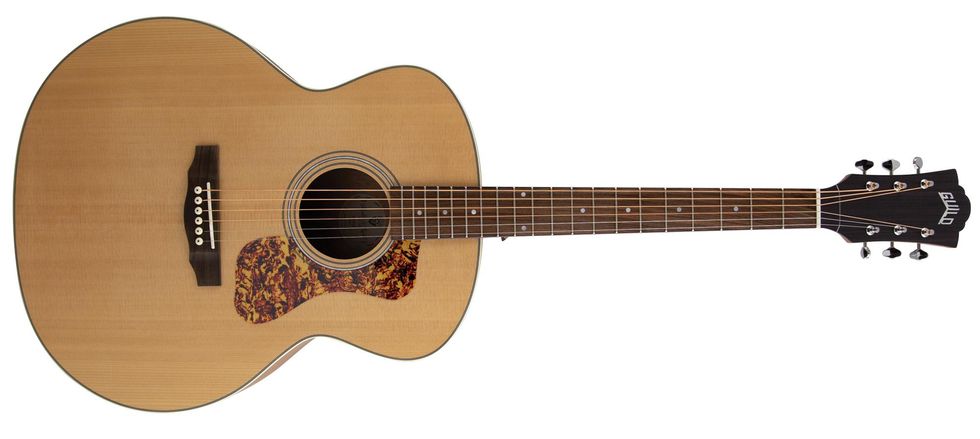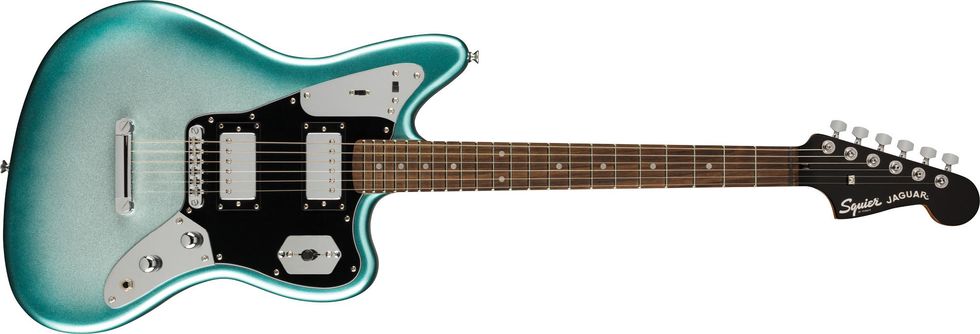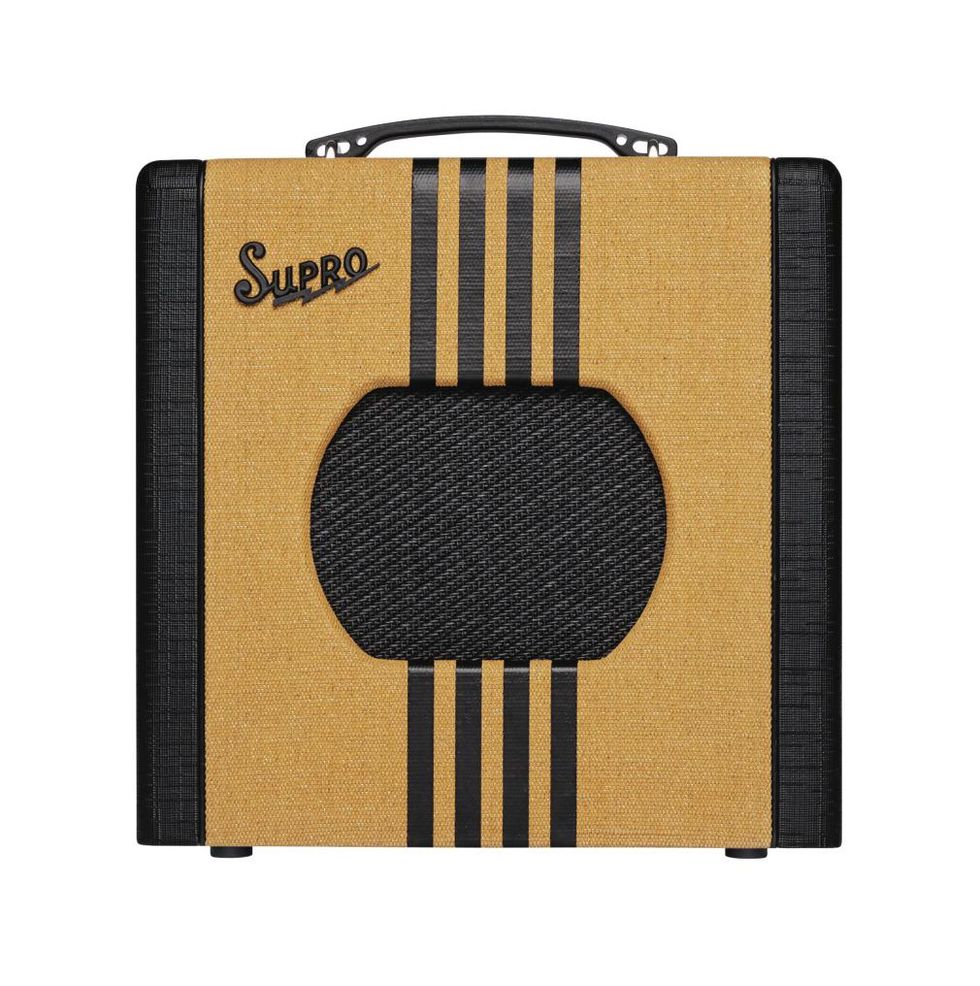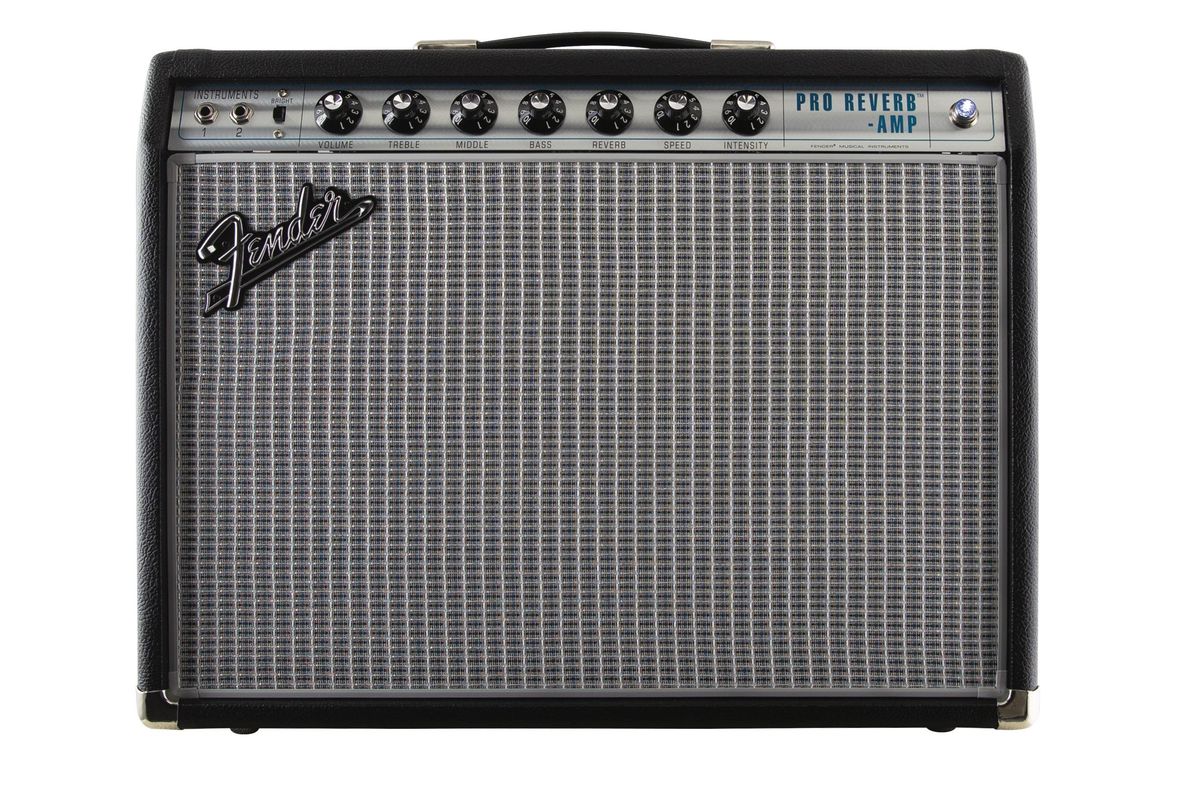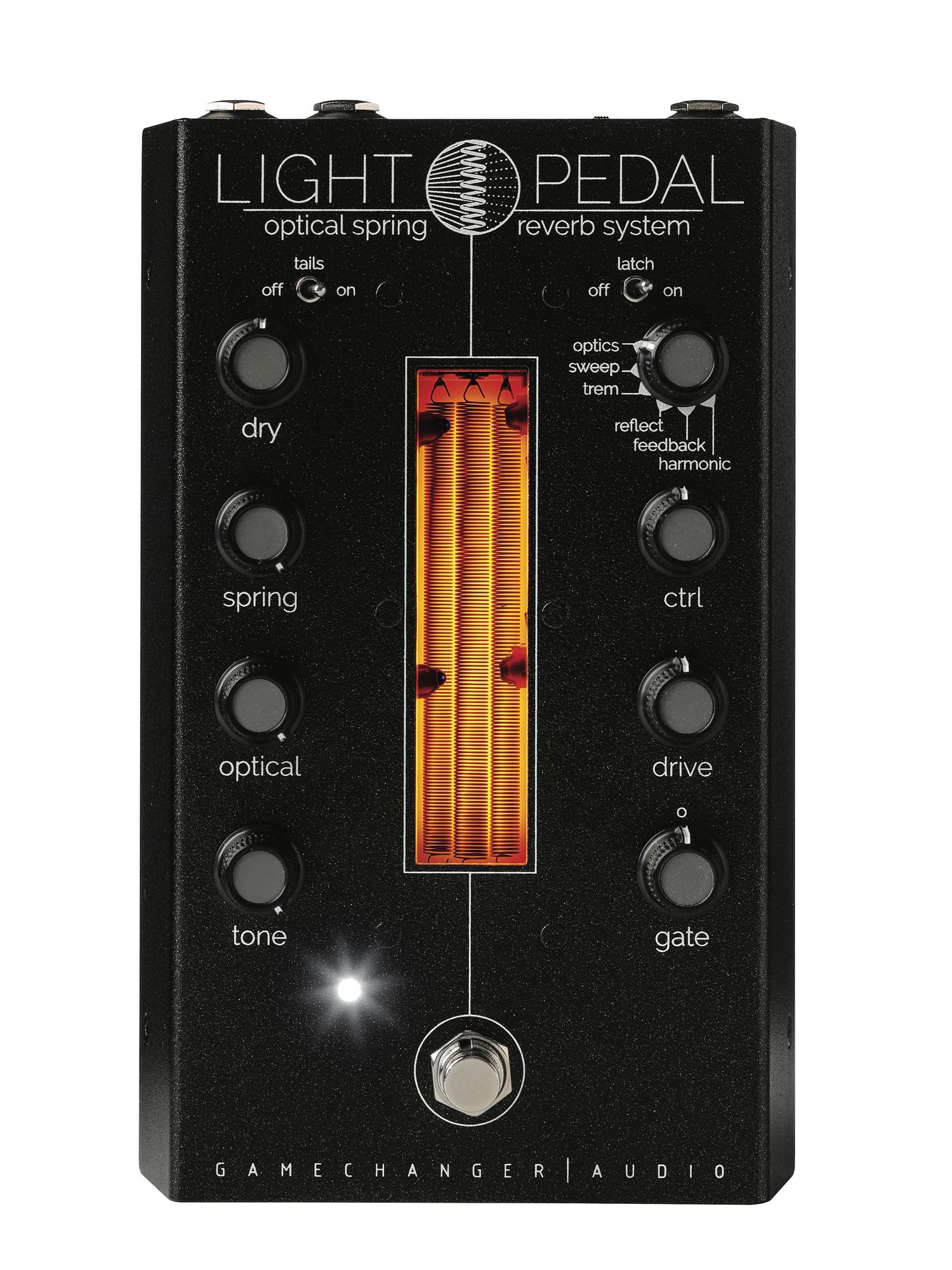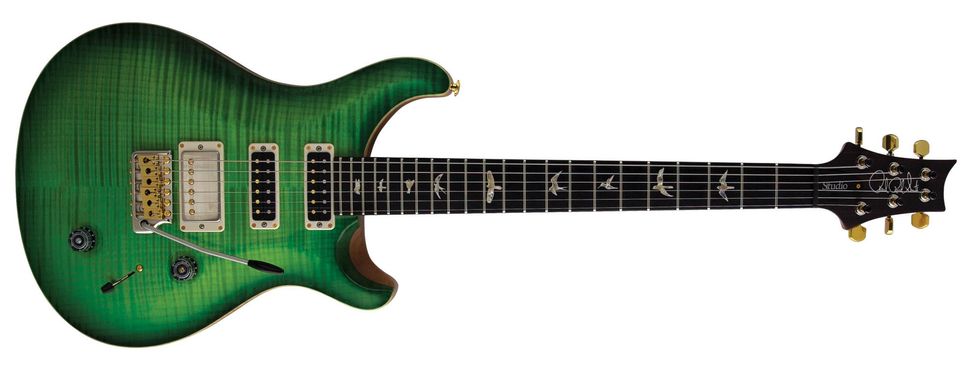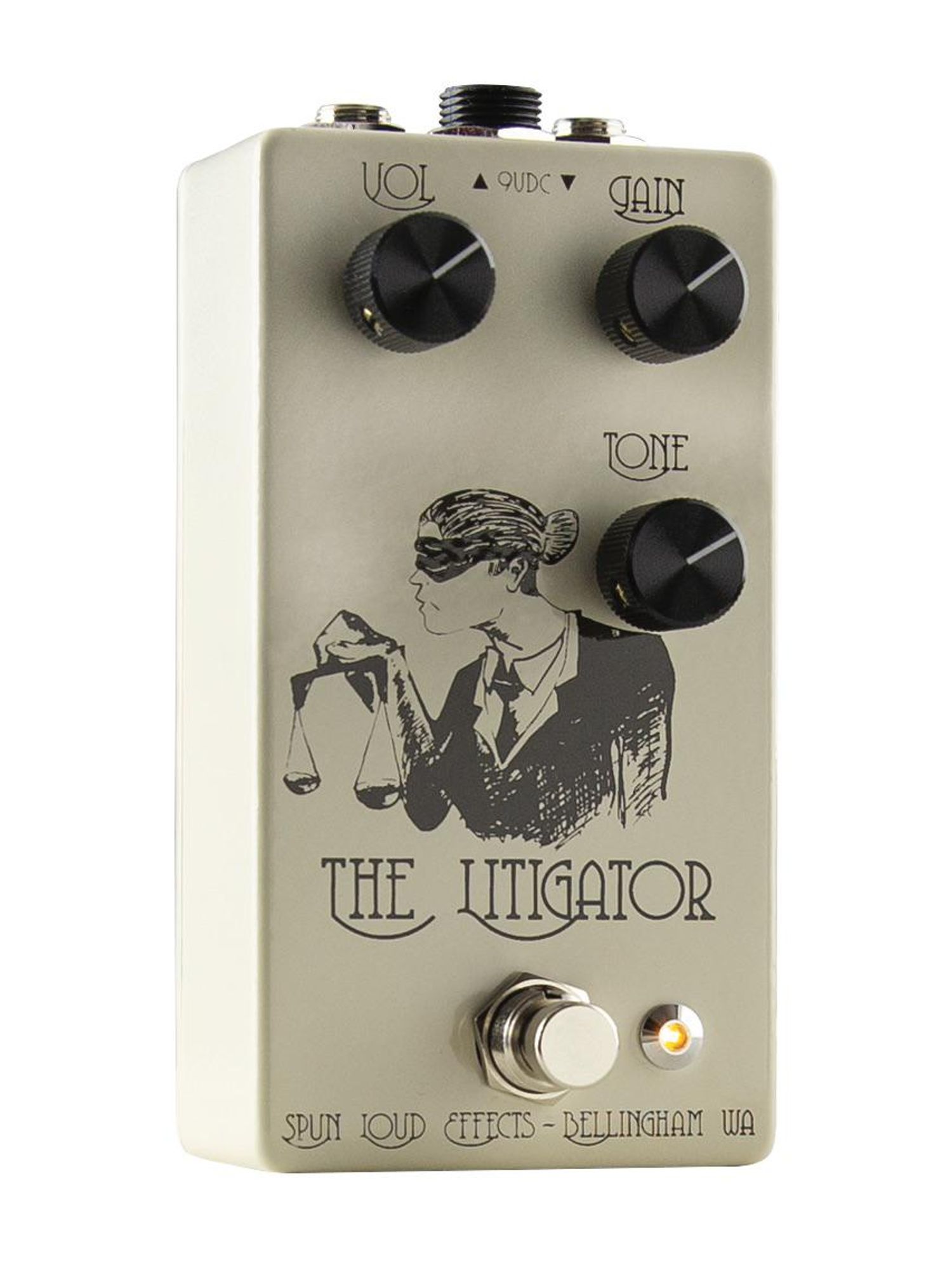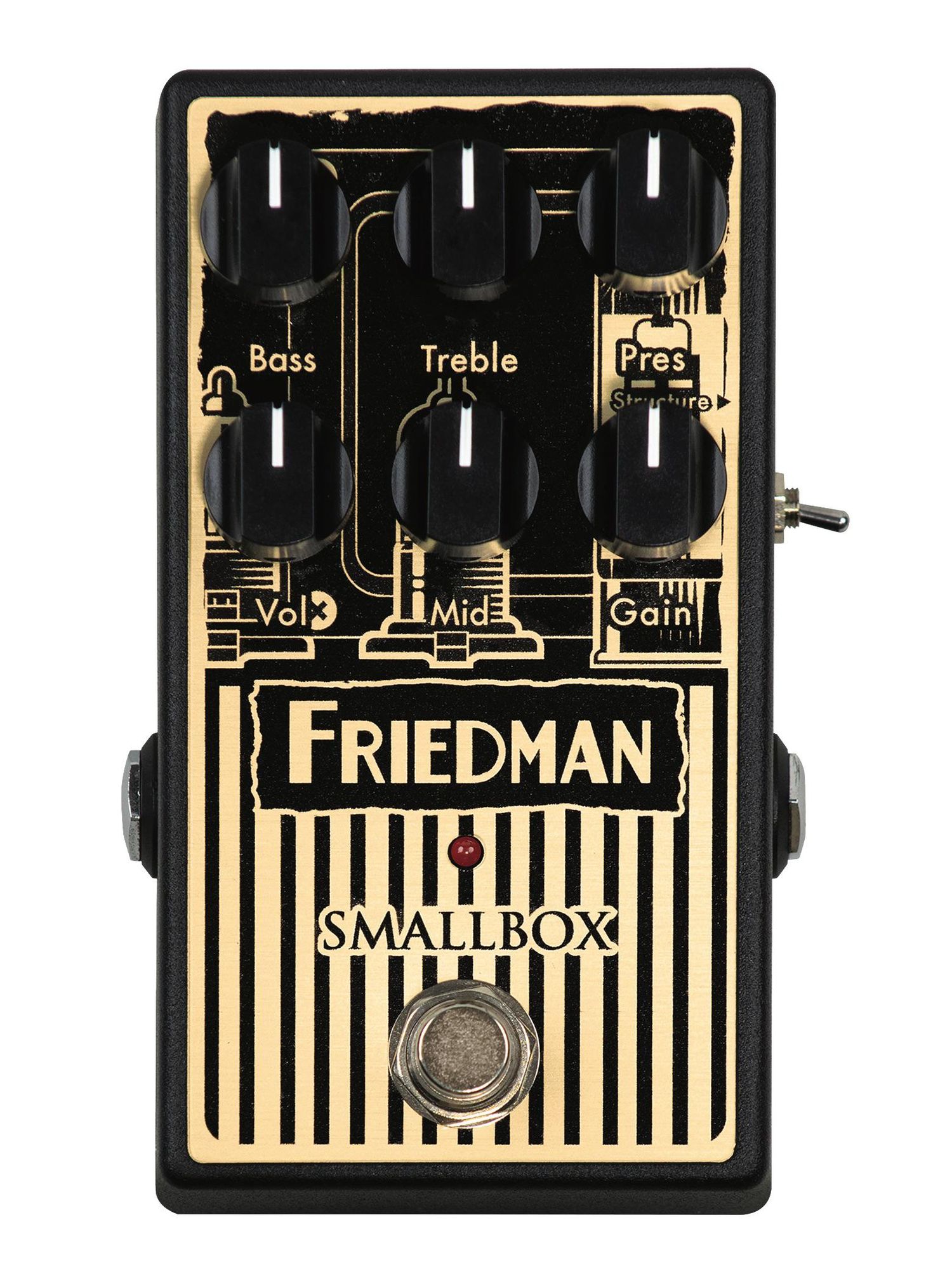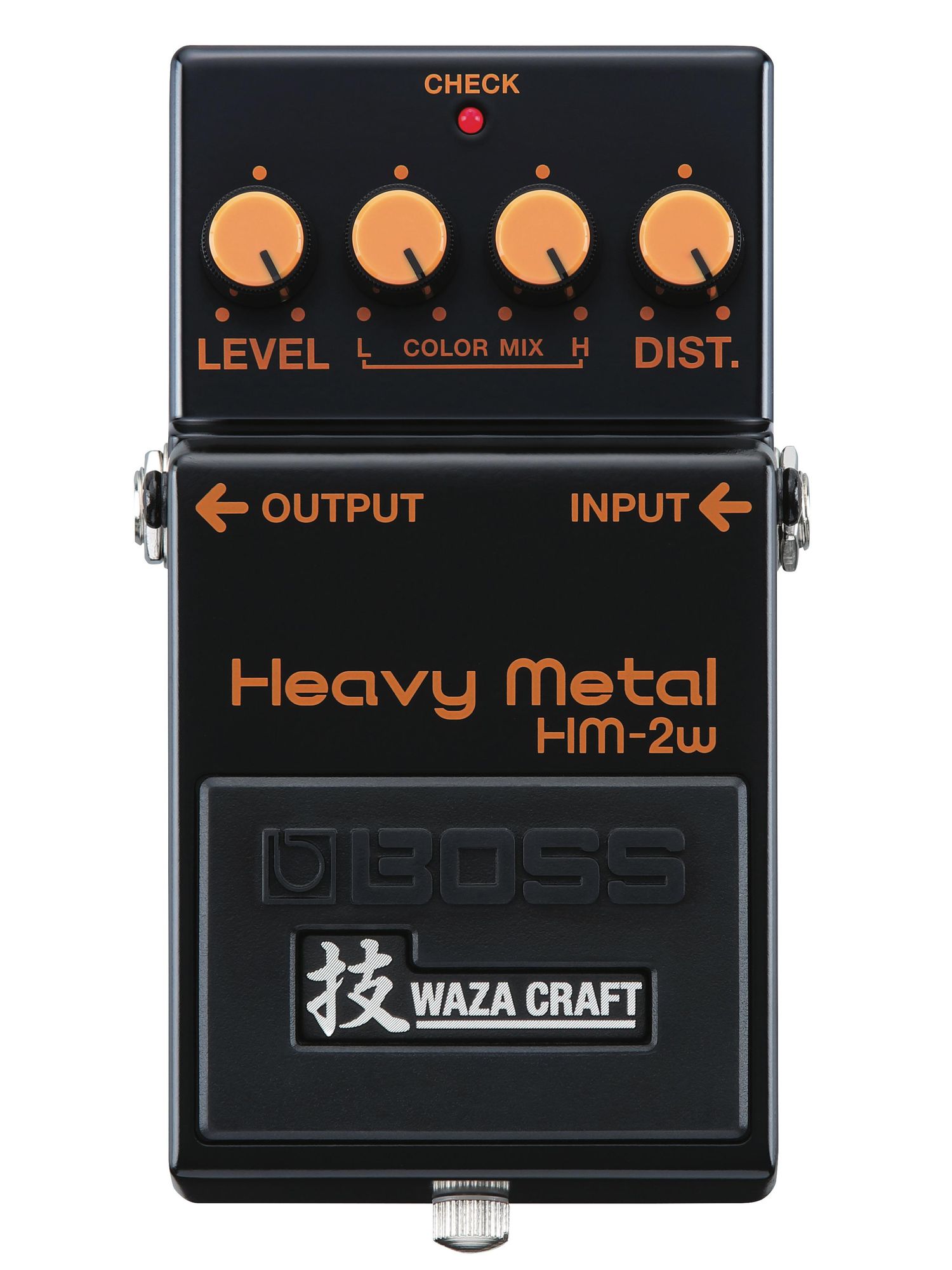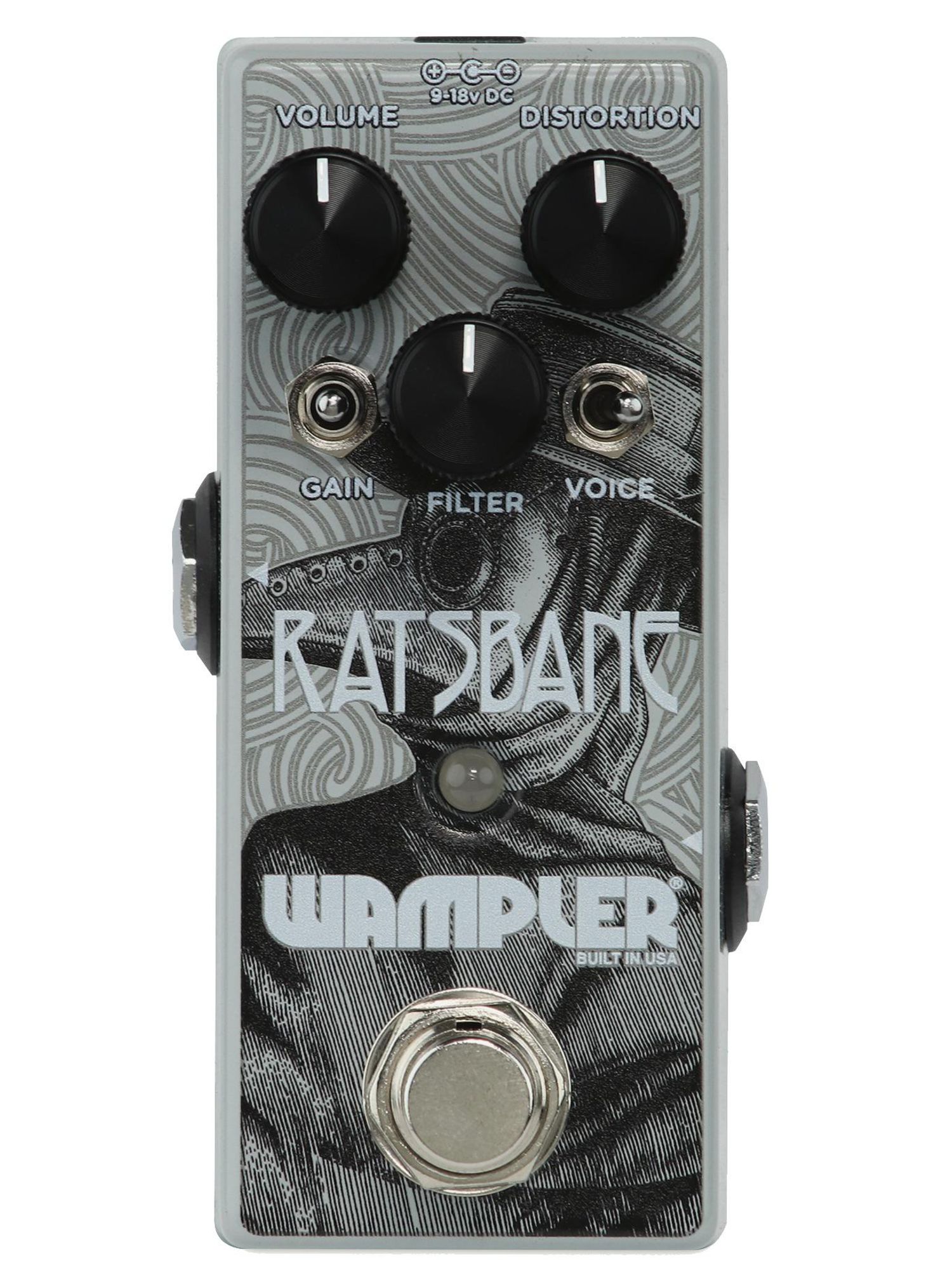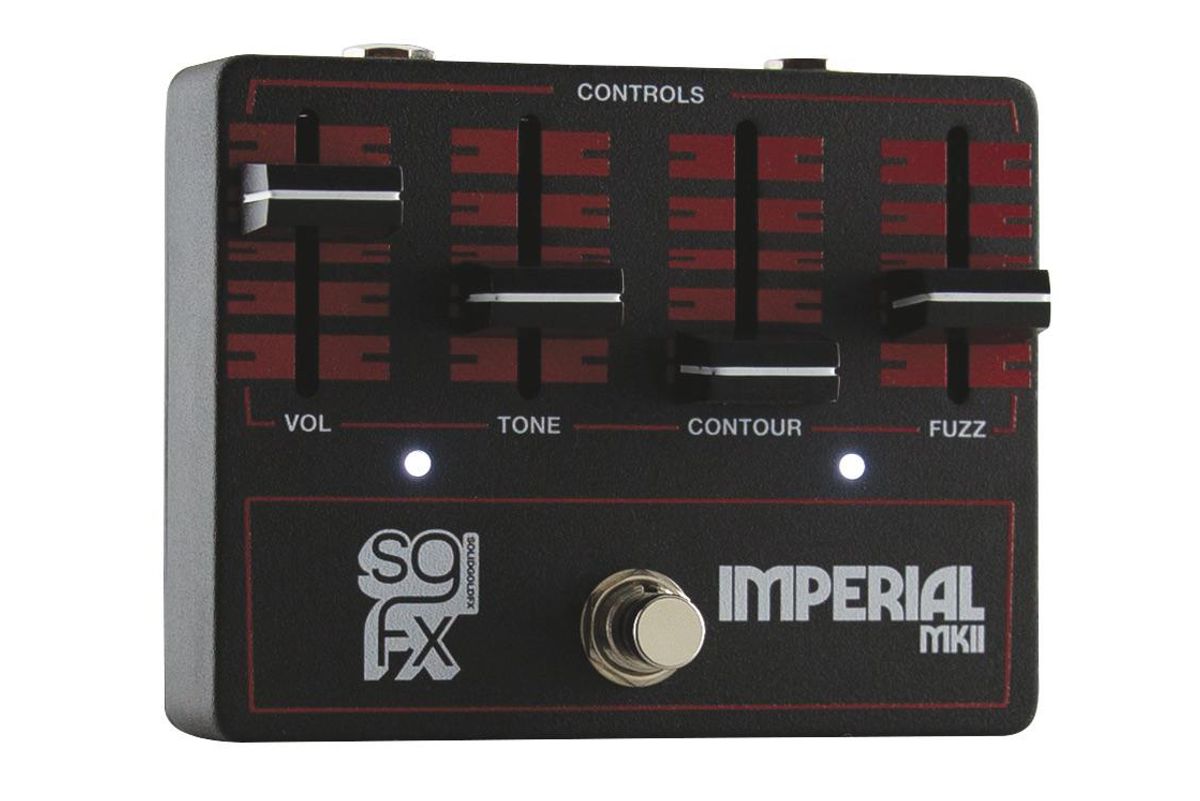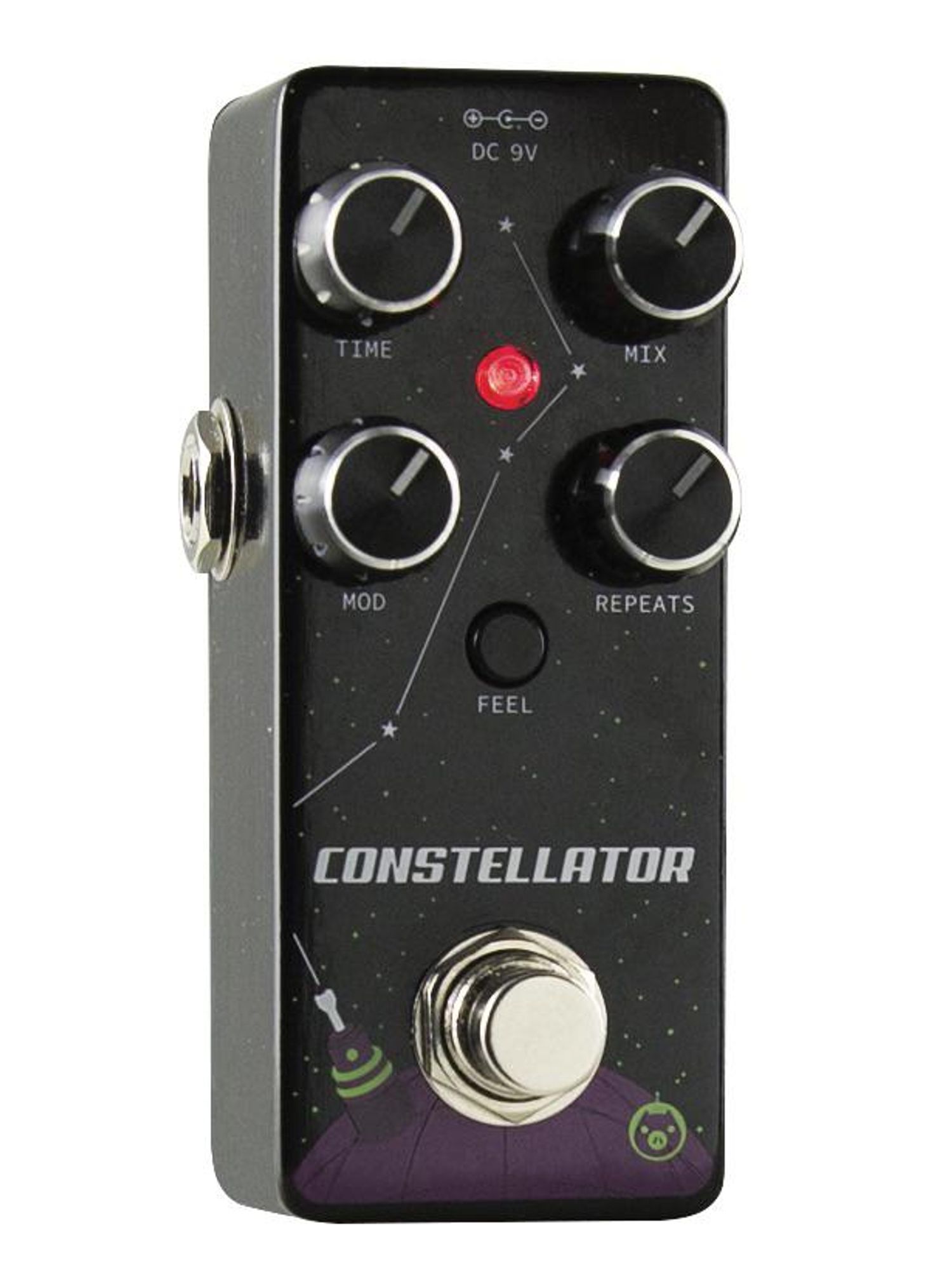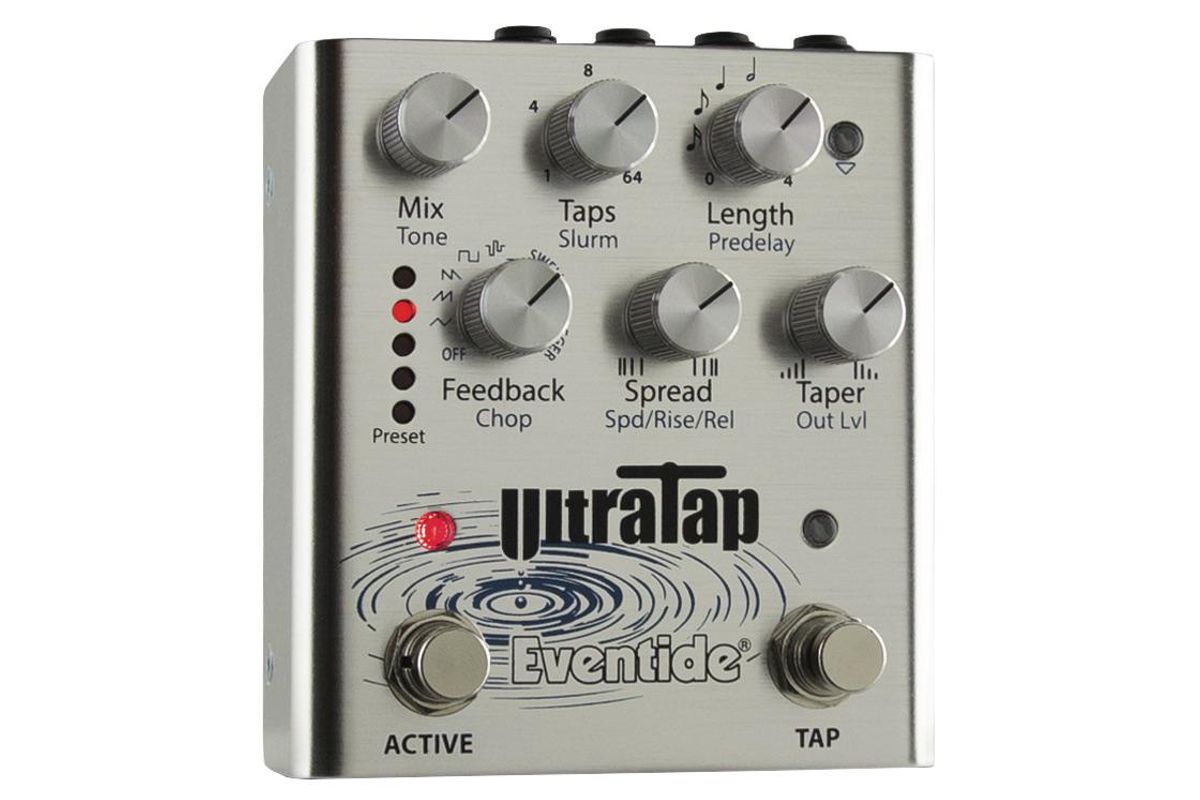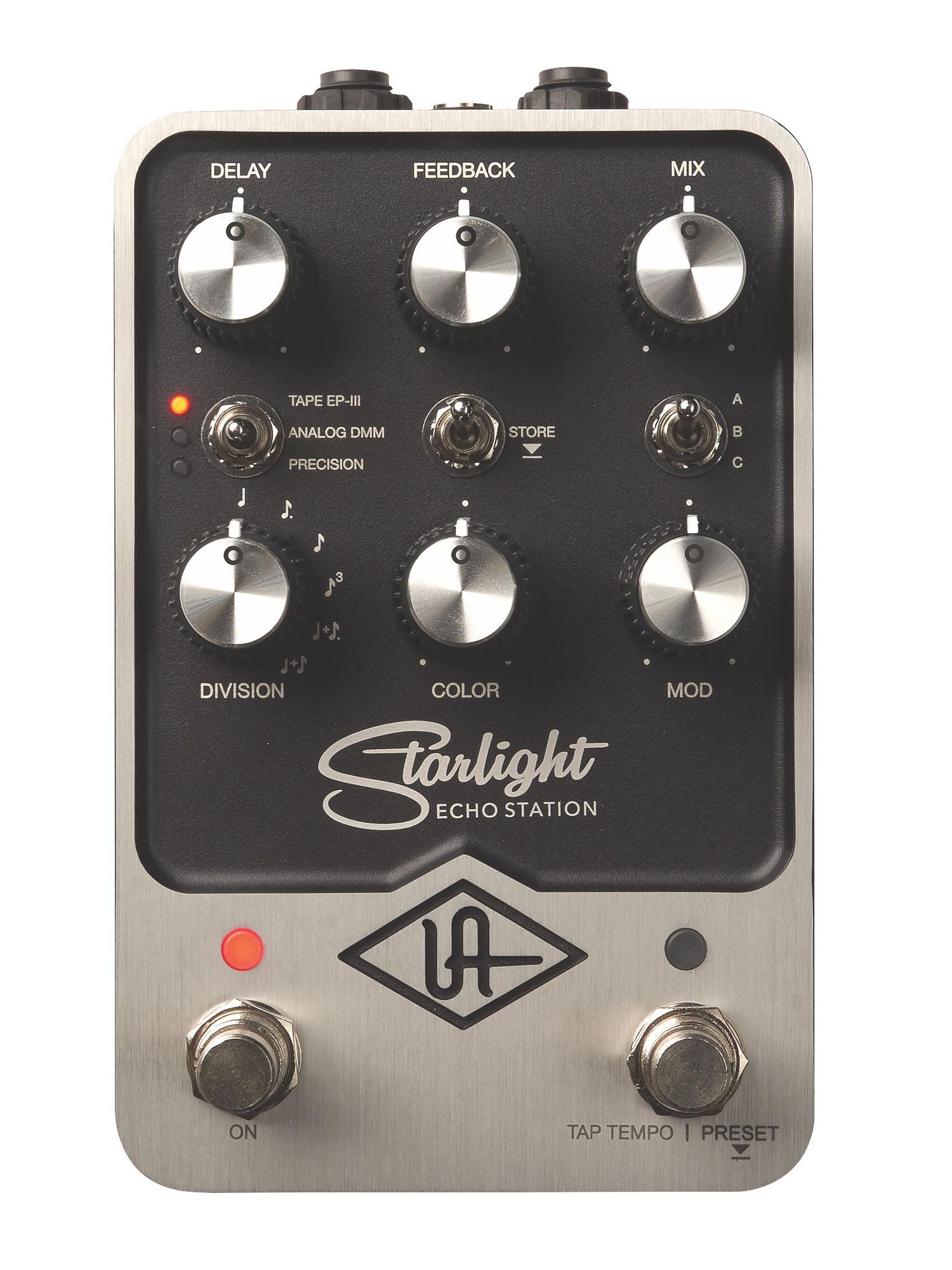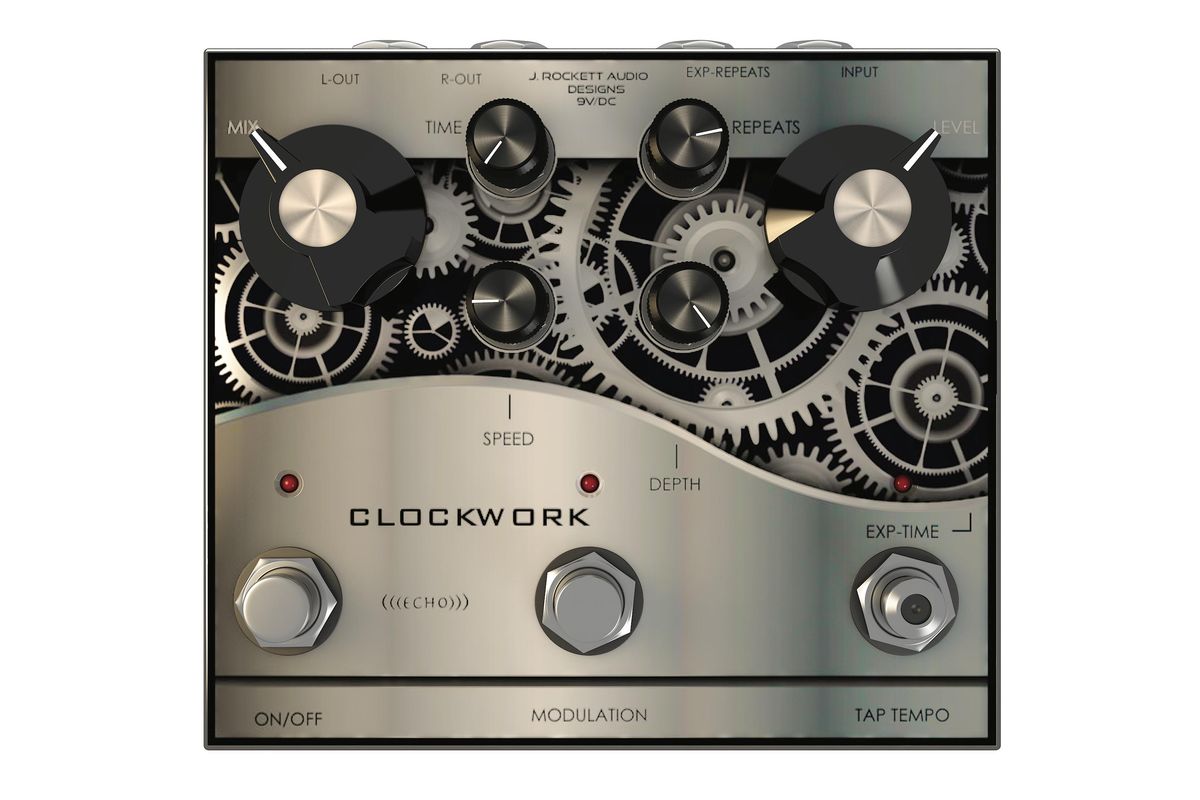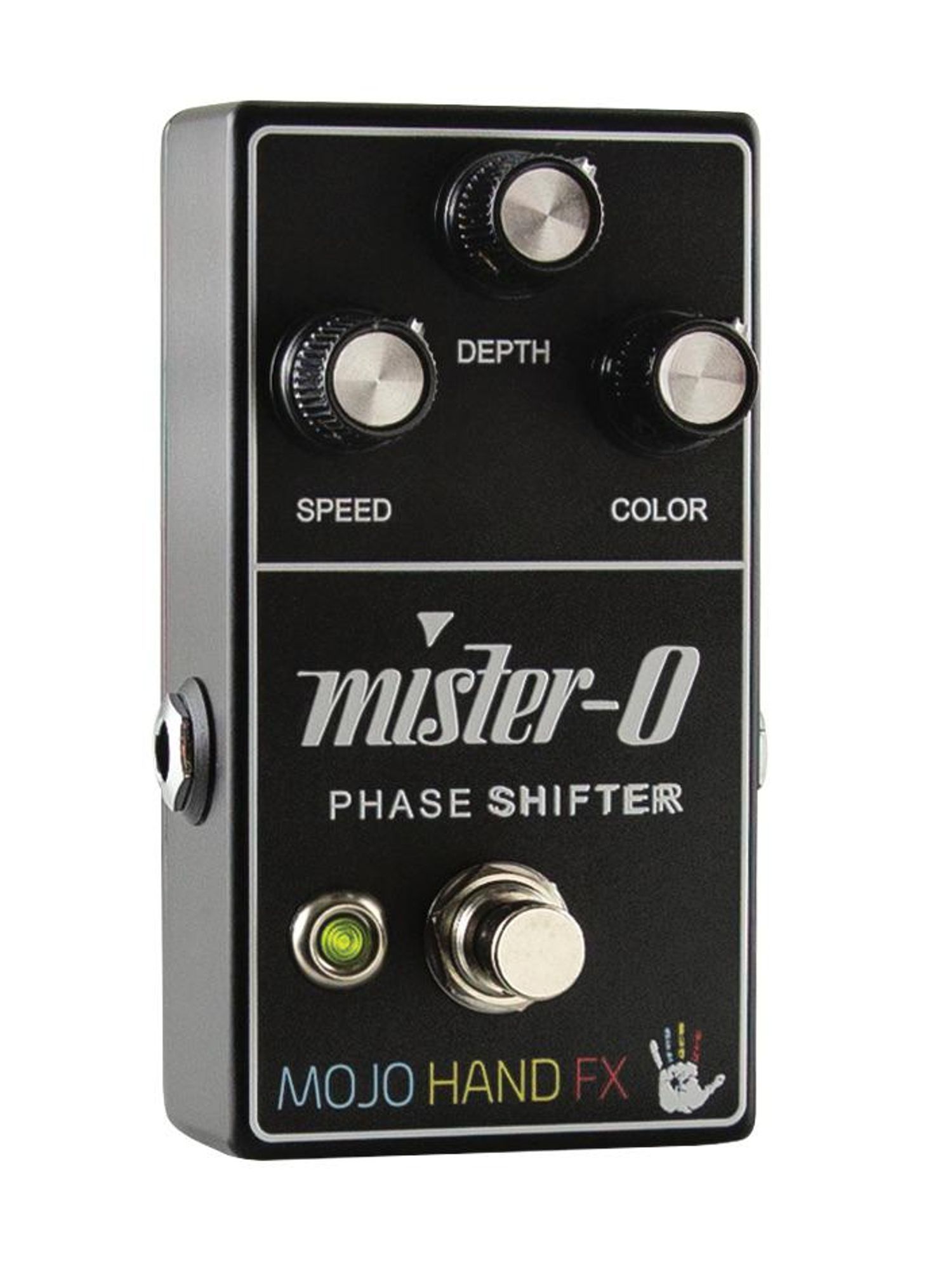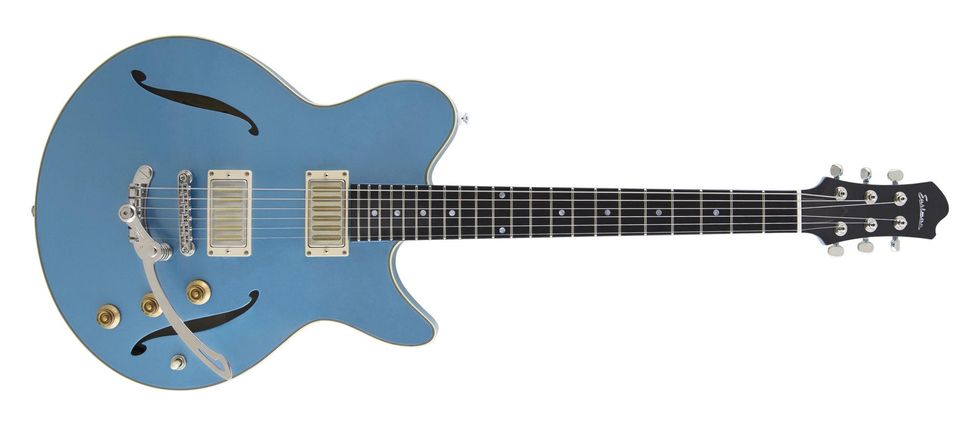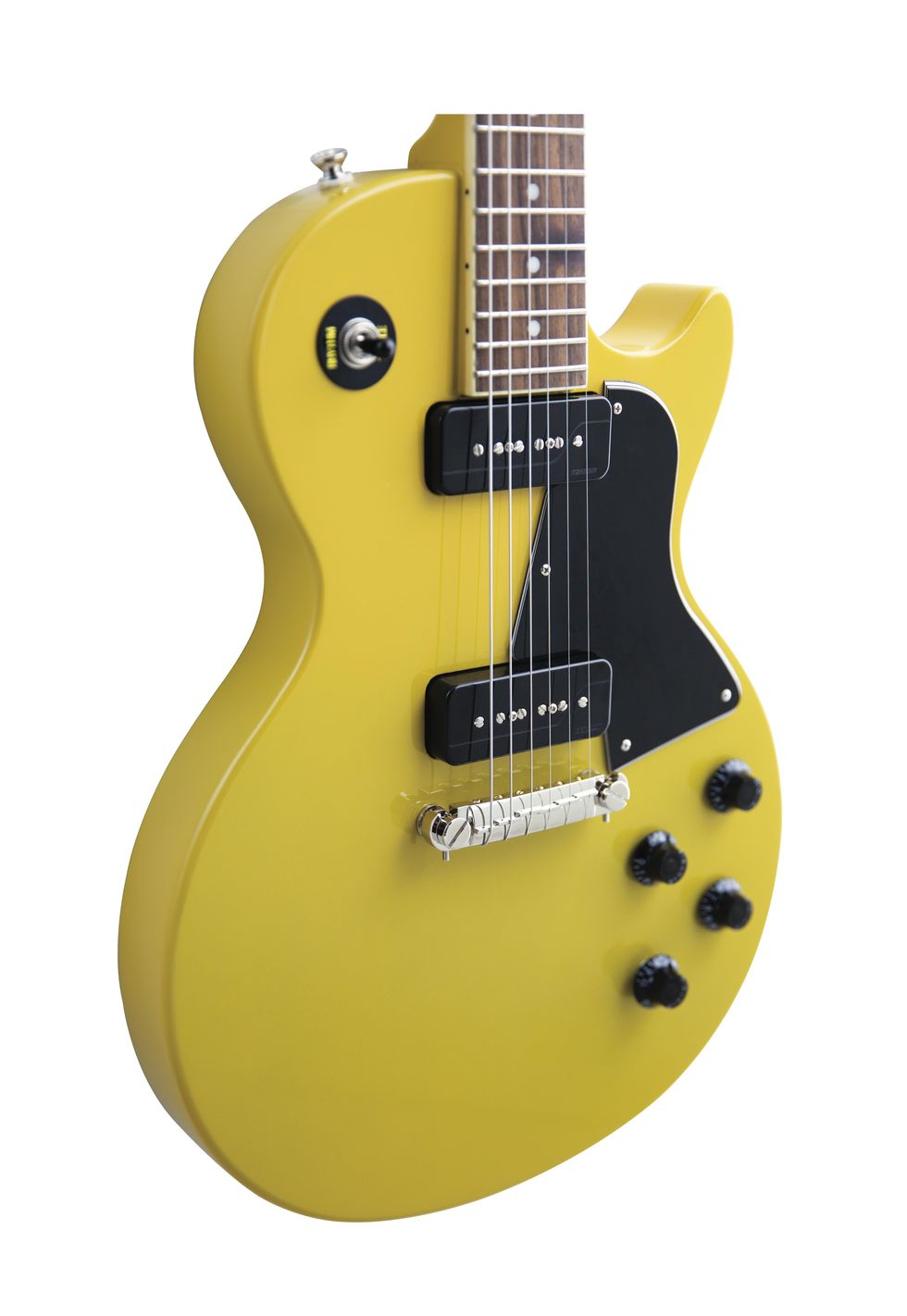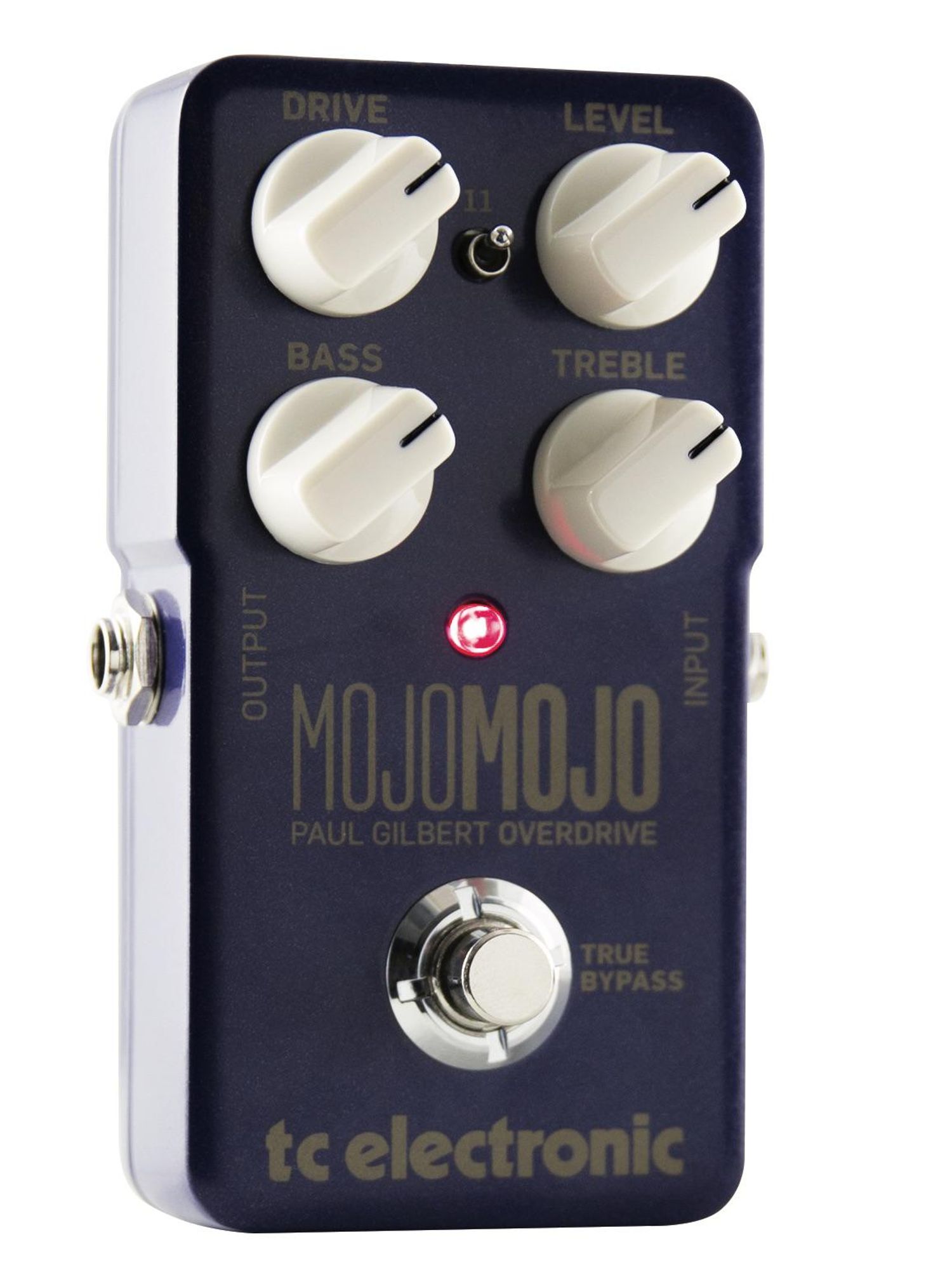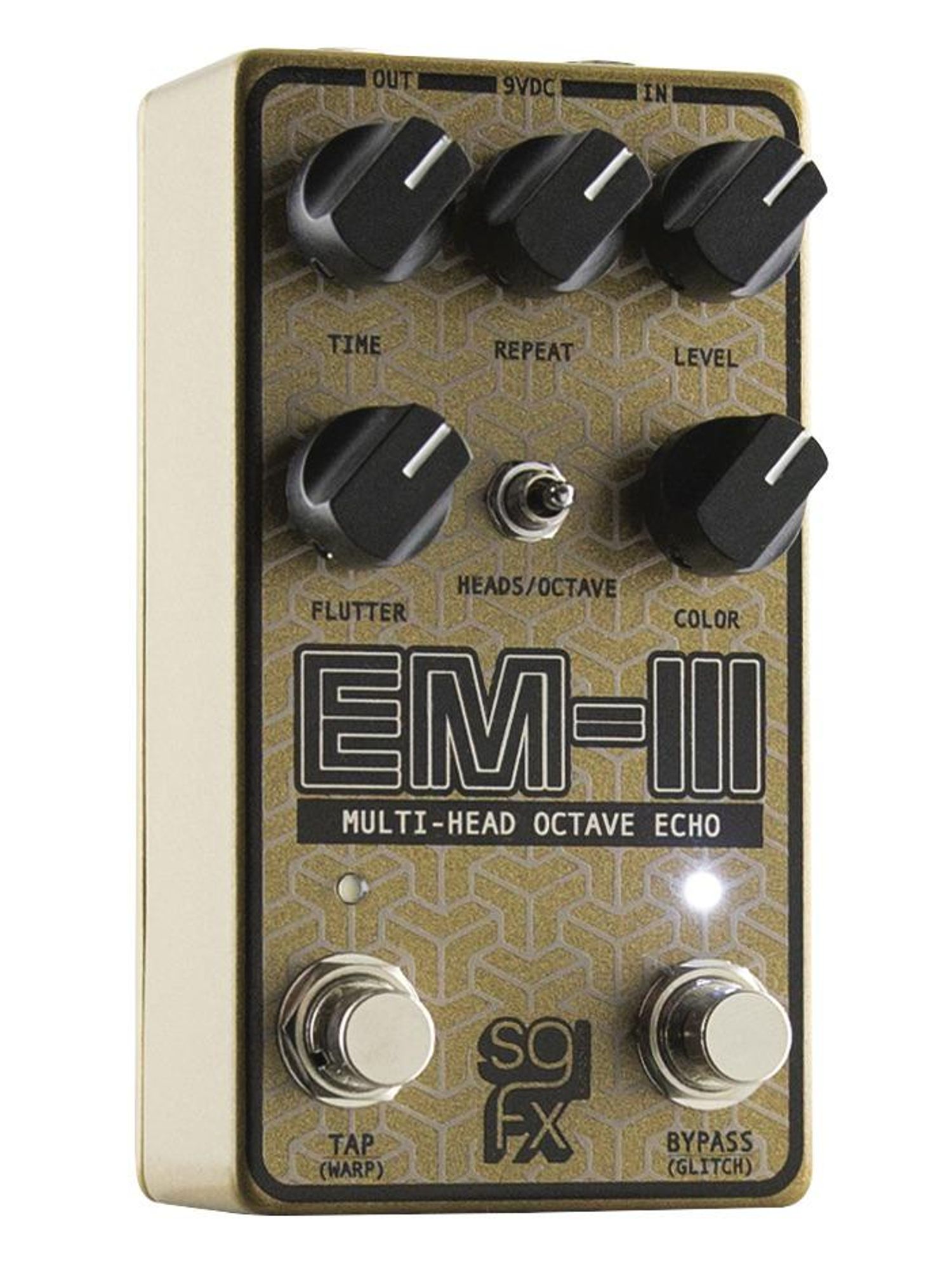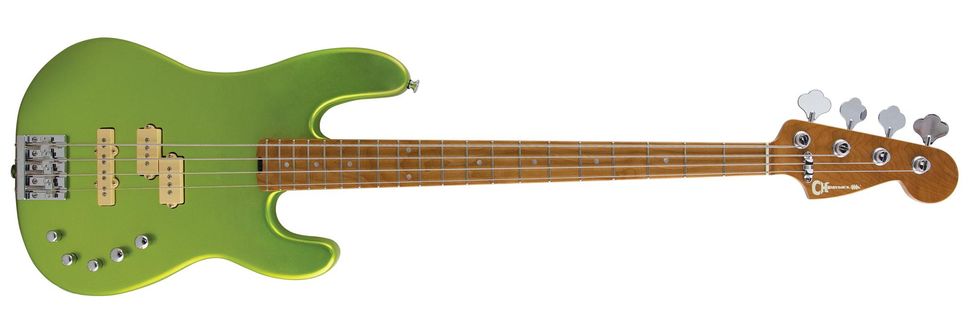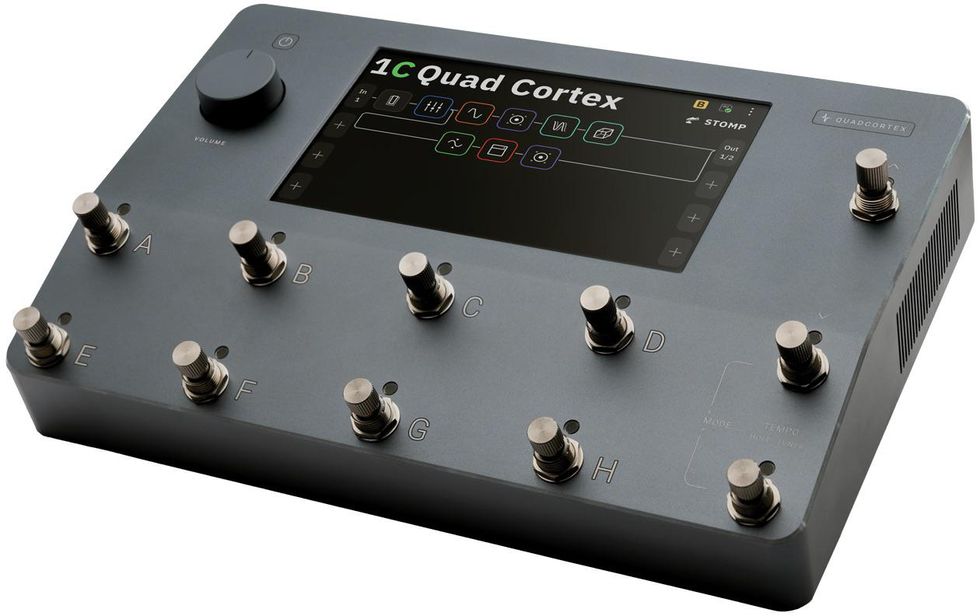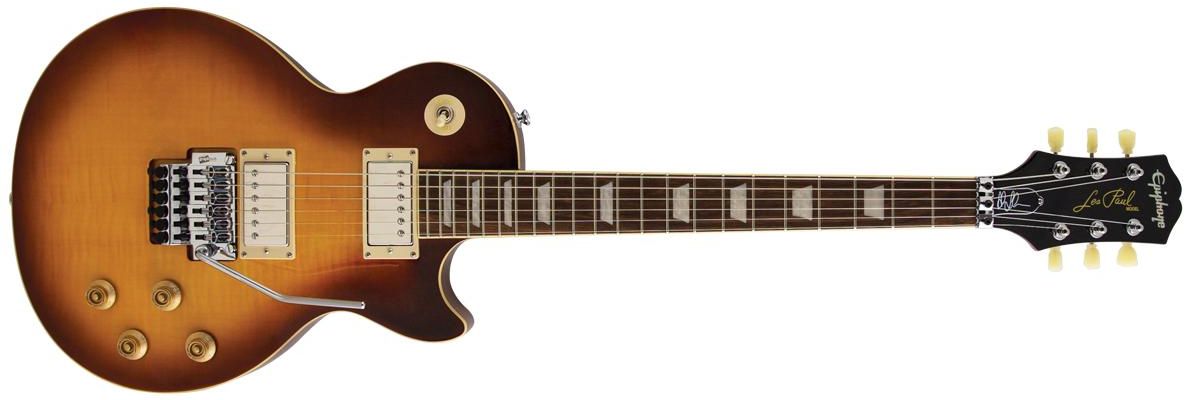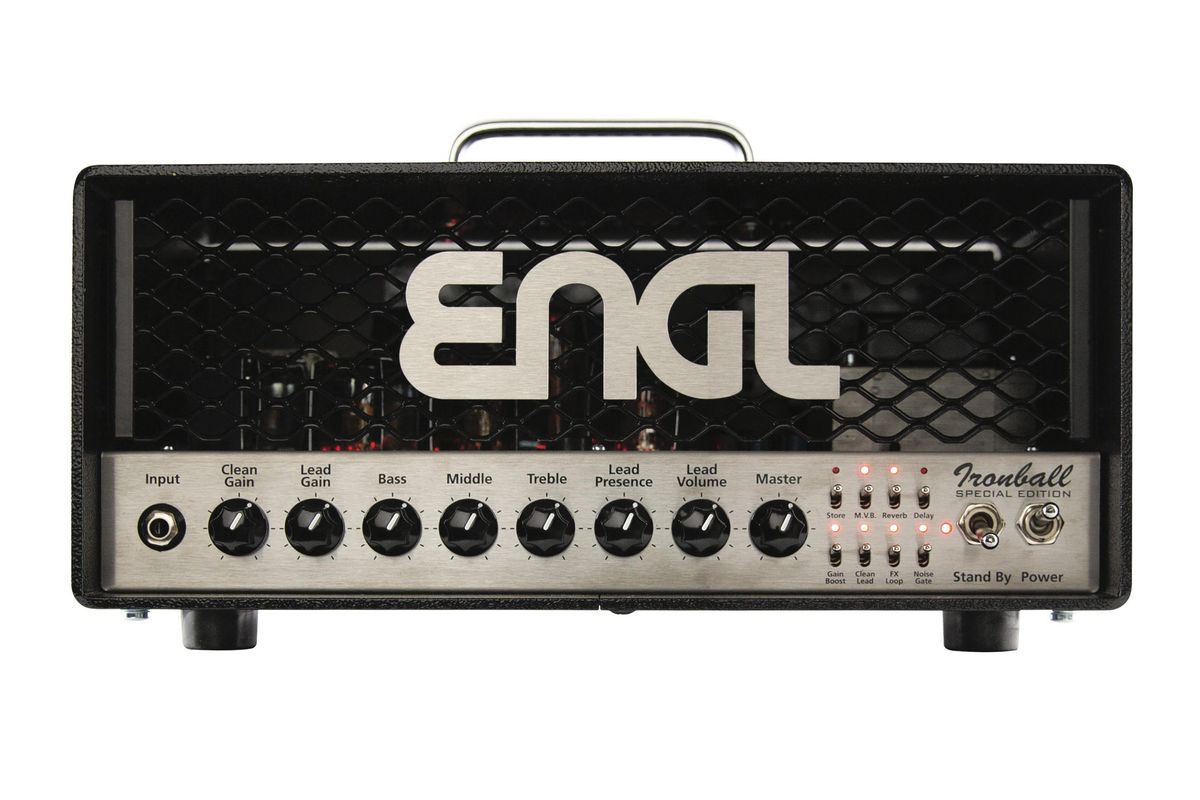When you look at the Epiphone Newport, it hits a lot of fun, familiar notes. The cherry finish and headstock, for example, are lovely traditional Gibson/Epiphone touchstones. Take a closer look, though, and this bass reveals itself as an instrument of more complex makeup. Indeed, the mix of throwback logo on the headstock, the modern bridge, and a pickup array that blends original Newport, Gibson EB-0, and modern flavors all give the instrument the feel of an old friend that’s been modded over decades.
The Newport, which shares more than a little lineage with its 6-string cousin, the Coronet, debuted in 1961. And the mashup of style elements and components will tell any vintage Epiphone spotter that this new China-built version is not an exact replica. But it manages to look completely classic and offers a much more varied selection of tones than you can get from many vintage basses. At just $449, the price is incredibly appealing, too.
Expect the Unexpected
Though the mahogany body and 30 1/2" short scale would be familiar to a Gibson EB-0 or original Epiphone Newport player, the new Newport’s got a medium-C profile neck and a smart 3-control array that includes master volume, tone, and a cool pickup/blend knob for the Sidewinder neck and TB Pro bridge pickups that’s a new addition to the mix. The linear arrangement of the knobs looks and feels sleek. All three controls have a slick brushed-metal-looking top and a very usable center notch that gives you extra, tangible reference for your control position.
The combination of the instrument’s compact size and scale length make the Newport very comfortable and made me eager to play it. As set up from the factory, I heard a bit of buzz that was fixed with a few small tweaks. The extra weight of the mahogany body may feel foreign to some players, too. In general, though, the Newport is a smooth performer.
Modern Modes
For all its early-1960s visual appeal, when I plugged the Newport in and set all the controls at full blast, a very non-vintage sound leapt from the instrument—bright, punchy tones that didn’t necessarily match the old-school look of the pickups producing them. Using both pickups together at maximum volume and tone is reminiscent of a Music Man StingRay with a bit of Gibson Thunderbird thrown in, which, in my experience, is not a common combination. Even without digging in very hard, the Epiphone produced upper-mid snarl that responded well when I added extra attitude to my picking approach.
”Using both pickups together at maximum volume and tone is reminiscent of a Music Man StingRay with a bit of Gibson Thunderbird thrown in, which, in my experience, is not a common combination.“
The discovery of that dynamic inspired me to use sounds I would not normally go for right away. Keen to check out the barky upper midrange with a pick, I set up a blend favoring the bridge pickup and rolled back the tone, which rewarded me with a very tight, mix-friendly sound that would undoubtedly work even better with flatwounds. This setting also brought out a more obvious helping of that Music Man humbucker-type tone—yet rolling back the tone control got me close to a snappy, late-’ 60s pick tone that would make Carol Kaye proud.
Just seeing the beefy Bass Sidewinder pickup, which is installed right at the base of the neck, inspired thoughts of classic, sub-drenched tones. But there’s a welcome tightness in the Sidewinder’s output without any help from the TB-Pro in the bridge. Reggae grooves stayed punchy, even with the tone way back, and that combination of definition and mellowness can be a rarity. By the way, the placement of the neck pickup also provides a great resting place for the thumb while exploring warmer sounds in a forward picking position.
The Verdict
The Newport’s breadth of tone options is an asset and superpower. It’s also a bit of a sneak attack because the bass looks so traditional. The Newport’s ability to sound tight, punchy, and modern when needed will surprise many players. I do wish the tone control could cut even more top end for dubbier tones. And while the Epiphone ships with roundwounds, it’s hard to not think about how good flatwounds might sound with that tone profile.
If you’re attracted to the vintage looks and expect vintage sounds, you might find many settings too modern and in your face. But if you’re looking for a lot of sounds … the Newport definitely delivers. It’s easy to get around the neck and it’s friendly to smaller hands. Given all that and the low price, the Newport is impressive as an entry-level bass. But this fun-to-play instrument has a lot to offer to professionals that like the assurance of having many cool, alternative tones close at hand.

